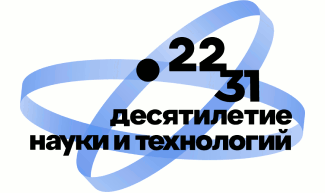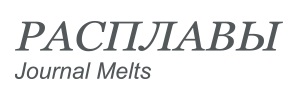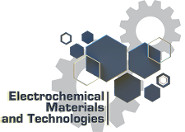- Since the whole world is going crazy about the Barbie phenomenon, we also decided to follow the current trends. Please have a look at our lab team.

- 19/10/2023: Another journal of the Advanced Materials family, Advanced Energy Materials (IF = 27.8), has accepted a review paper “Fundamental understanding and applications of protonic Y- and Yb-coped Ba(Ce,Zr)O3 perovskites: state-of-arts and perspectives”, prepared by the laboratory staff together with Prof. Z. Shao (Nanjing Tech University, China). This paper presents the basic physicochemical and functional properties of the most studied proton-conducting oxides based on BaCe1–x–y–zZrxYyYbzO3–δ (Ba(Ce,Zr,Y,Yb)O3 or BCZYYb). In particular, the paper describes a brief history of the study of proton-conducting oxides, justifies the choice of yttrium/ytterbium-doped derivatives, and considers properties important for practical applications. The work is in a pre-print preparation, but already has a known doi: https://doi.org/10.1002/aenm.202302175.
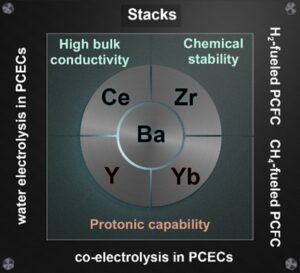
- 19/10/2023: Two-layered perovskite BaLa2InYO7 was investigated as a protonic conductor for the first time. The results of the study are published in the work ‘Novel Yttrium isovalent doping of proton conductor BaLa2In2O7: structure, proton uptake, ionic transport’ (the Journal Journal of Solid State Electrochemistry (IF = 2.747)). It is shown that the introduction of Y3+ ions with large ionic radii into the perovskite block leads to an increase in the volume of the unit cell and an expansion of the interlayer space. It leads to an increase in the mobility of the oxygen ions, an increase in the oxygen-ion conductivity values, and an increase in the water uptake during hydration. Thus, the proton concentration and the proton conductivity increase, and the BaLa2InYO7 sample exhibits predominantly proton conductivity at temperatures below 500 °C.
► DOI: https://doi.org/10.1007/s10008-023-05721-5
► ResearchGate: https://www.researchgate.net/publication/374973971
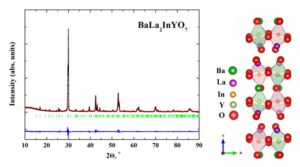
- 04/10/2023: Our recent review entitled ‘Chemistry and electrochemistry of CeO2-based interlayers: Prolonging the lifetime of solid oxide fuel and electrolysis cells’ has been published in the Russian Chemical Reviews (IF = 7.7) journal. This work overeviews the recent progress and achievements in the fundamental and applied researches dealing with the ceria interlayers and their impact on chemistry and electrochemistry of solid oxide cells based on classical zirconia electrolytes as well as promising oxygen-ionic and proton-conducting analogs. The full text is available via the link: https://doi.org/10.59761/RCR5097.ResearchGate: https://www.researchgate.net/publication/373459818.
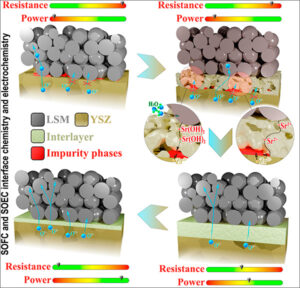
- 19/08/2023: A group of researchers from Russia, including members from the IHTE of the Ural Branch of the Russian Academy of Sciences and Ural Federal University named after B.N. Yeltsin, Moscow State University, and Federal Research Center “Crystallography and Photonics” (Moscow, Russia); SamSTU, SCTMS, SamSMU (Samara, Russia); and FRC PCP MC RAS (Chernogolovka, Russia) jointly authored an article titled ‘Comprehensive study of conductivity in the series of monoclinic oxymolybdates Ln2MoO6 (Ln = Sm, Gd, Dy)’ in the Solid State Ionics journal (IF=3. 699). The aim of the study is to analyze the electrical characteristics of various oxymolybdates belonging to rare earth elements, specifically Ln2MoO6, utilizing both theoretical and experimental methods. The calculated levels of oxygen-ion conductivity in Ln2MoO6 (Ln = Sm, Gd, Dy) conform to the empirical results.
Check out the following link:
► DOI: https://doi.org/10.1016/j.ssi.2023.116337
► ResearchGate: https://www.researchgate.net/publication/375168582
- 16/08/2023: The journal Chimica Techno Acta published a report on the creation of new non-toxic materials based on lanthanum zirconate (La2Zr2O7) with high osseointegration and strength characteristics. The paper is titled ‘Ceramic materials based on lanthanum zirconate for the bone augmentation purposes: cytocompatibility in a cell culture model’. There are the ceramic materials based on undoped and alkali-earth (Ca, Sr) doped La2Zr2O7 were obtained. The main physical and chemical characteristics of the ceramic materials were determined.
► DOI: https://doi.org/10.15826/chimtech.2023.10.4.02
►https://journals.urfu.ru/index.php/chimtech/article/view/7013
► ResearchGate: https://www.researchgate.net/publication/373225100
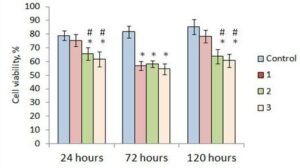
- 01/08/2023: A letter ‘Heterovalent and isovalent doping of bilayer proton-conducting perovskite SrLa2Sc2O7’ was published in a regular issue of the journal Electrochemical Materials and Technologies. In this paper, the possibility of heterovalent and isovalent doping of La and Sc sublattices of bilayer perovskite SrLa2Sc2O7 was made for the first time. It was shown that electrical conductivity increases in the row of bilayer perovskites SrLa2ScInO7 – SrLa2Sc2O7 – BaLa2In2O7 – BaNd2In2O7.
Available at: https://journals.urfu.ru/index.php/elmattech/article/view/6969
► DOI: https://doi.org/10.15826/elmattech.2023.2.015
► ResearchGate: https://www.researchgate.net/publication/372869212.
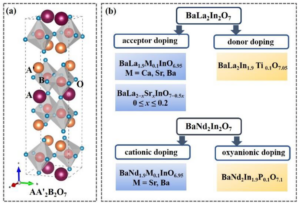
- 16/07/2023: The Journal of the European Ceramic Society (IF = 5.7) has published an article “Functional properties of La1–xBaxFeO3–δ as symmetrical electrodes for protonic ceramic electrochemical cells” devoted to the possibility of using lanthanum-barium ferrites as electrodes for electrochemical cells based on proton-conducting electrolytes. This work is the starting point for the first co-author, Maria Gordeeva, who is preparing a dissertation in this area.
DOI: https://doi.org/10.1016/j.jeurceramsoc.2023.07.018
ResearchGate: https://www.researchgate.net/publication/372394728

- 23/06/2023: The Journal of Solid State Electrochemistry (IF = 2.5) has published a new paper “Low-temperature transport properties of isovalent-substituted La0.9Sr0.1YbO3–δ ceramic materials”, which belongs to the special issue “Solid oxide fuel cells and electrolysis cells – SOFCs/ SOECs”, https://link.springer.com/collections/bdcehjcfii. In this work, the transport properties of the materials La0.9Sr0.1Yb0.8R0.2O3–δ (R = In, Er, Y, Dy) were studied depending on technological and chemical factors. It is shown that the ionic conductivity of the materials increases with an increase in both the sintering temperature of the ceramics and the ionic radius of the dopant.
DOI: https://doi.org/10.1007/s10008-023-05574-y
ResearchGate: https://www.researchgate.net/publication/371804924
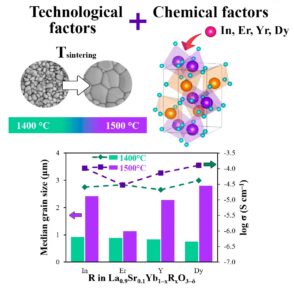
- 02/05/2023: The April issue of the Russian Journal of Electrochemistry (IF=1.004) simultaneously published two articles by laboratory’s researchers. These works: ‘Ionic (O2– and H+) Transport in Oxygen-Deficient Perovskites La2Me+3ZnO5.5‘ (https://doi.org/10.1134/S1023193523040055) and ‘Oxygen-Ionic Conductivity in Isovalent-Doped Layered BaLaInO4-Based Perovskite’ (https://doi.org/10.1134/S1023193523040031) published based on reports at the 16th International Meeting ”Fundamental Problems of Solid State Ionics’‘ (27.06.–03.07.2022, Chernogolovka). The papers are devoted to investigations of the nature of conductivity in perovskite-like compounds and discussion of the regularities of ion transport in phases with structural and impurity disorder.
- 01/05/2023: A recent study in Inorganics (IF=3.149) journal a new materials based on rare earth oxides were described. The article is entitled Oxygen-Ion and Proton Transport of Origin and Ca-Doped La2ZnNdO5.5 Materials. Phase composition, lattice parameters, hydration capability and electric properties of pure and Ca-Doped La2ZnNdO5.5 were investigated. The conductivity difference between undoped and calcium-doped samples is more than two orders of magnitude due to the appearance of oxygen vacancies during acceptor doping, which are responsible for a higher ionic conductivity. The Ca-doped phases are capable of reversible water uptake, confirming their proton-conducting nature.
► DOI: https://doi.org/10.3390/inorganics11050196
► ResearchGate: https://www.researchgate.net/publication/370462319
► https://www.mdpi.com/2304-6740/11/5/196
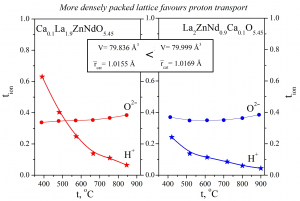
- 17/04/2023: In the Transactions of the Kоla Science Centre of RAS. Series: Engineering Sciences, materials of the IV All-Russian Conference with international participation ”Research and development in the field of chemistry and technology of functional materials” (April 17–21, 2023, Apatity) were published. The papers ‘Features of proton transport BaLa0.9M0.1InO4 (M = Nd, Gd, Pr) and BaLaIn0.9M0.1O4 (M = Sc, Y) doped perovskites based on barium lanthanum indate’ (DOI:10.37614/2949-1215.2023.14.1.019), and ‘Effect of ZnO doping on the electrical conductivity of LaInO3 perovskite’ (DOI: 10.37614/2949-1215.2023.14.2.013) were presented by laboratory’s researchers.
- 14/04/2023: The laboratory researchers took part in publishing an article in Processes journal (IF=3.5) called ‘Electrical Properties and Chemical Resistance of the Composites (1-x)Gd2Zr2O7·xMgO in Li-Containing Chloride Melt.’ Composites based on gadolinium zirconate (1-x)Gd2Zr2O7·xMgO were investigated for their chemical resistance in oxide-chloride lithium melts for the first time. The structure and transport properties of these materials were also studied for the first time.
Check out the following link:
► DOI: https://doi.org/10.3390/pr11041217
► ResearchGate: https://www.researchgate.net/publication/370039988
- 11/04/2023: The successful application of the cationic co-doping method to layered perovskites has been described in the paper ‘Novel co-doped protonic conductors BaLa1.9Sr0.1In1.95M0.05O6.925 with layered perovskite structure’. The results of the structural and physicochemical investigations have been published in the Chimica Techno Acta. In this work, the bilayer perovskites BaLa1.9Sr0.1In1.95M0.05O6.925 (M = Mg2+, Ca2+) have been prepared and investigated for the first time. Cationic co-doping increases oxygen-ion and proton conductivity values.
Available at: https://journals.urfu.ru/index.php/chimtech/article/view/6701.
► DOI: https://doi.org/10.15826/chimtech.2023.10.2.06.

- 05/04/2023: Ceramics International (IF = 5.532) has accepted for publication the paper “Thermal and chemical expansion behavior of hydrated barium stannate materials”, which continues the activity of our laboratory in the field of physicochemical properties of complex oxides based on barium stannate (BaSnO3), http://dx.doi.org/10.1016/j.ceramint.2023.04.016. Together with colleagues from the Ural Federal University (Russia), St. Petersburg State University (Russia), and Shenzhen University (China), the laboratory staff have focused on the thermal and chemical expansion of such materials using high-temperature X-ray phase and dilatometry analyses.In addition to the classical thermal expansion during heating, stannates as proton-conducting materials exhibit chemical strain, which consists in their dehydration (i.e. removal of water from the crystal lattice). The latter is associated with chemical compression of the dimensional parameters of the materials in the range of 300-700°C, which leads to the appearance of negative values of thermal expansion coefficients (TECs). Negative TECs are observed, for example, for a number of complex oxides based on molybdate and tungstate families due to rearrangement of their structure (phase transitions). In stannates, which have the highest symmetry of the perovskite structure even at room temperature, such structural transformations are absent. Therefore, it can be concluded that chemical deformation is comparable to the effects caused by phase transitions.
► ResearchGate: https://www.researchgate.net/publication/369766377
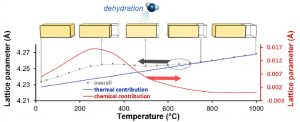
- 05/04/2023: The Zn2+−doping effect on the B-site of LaInO3 on structure, water uptake and electrical properties was investigated in article ‘Ionic (O2−, H+) transport in novel Zn-doped perovskite LaInO3’. The results have been published in the International Journal of Hydrogen Energy (IF=7.139). The Zn-doping decreases the sintered temperature and makes it possible to obtain high-density ceramics. The substitution increases the conductivity by ∼2 orders of magnitude. Below ∼500 °C the phases exhibit the dominant oxygen-ionic transport (dry atmosphere), and the dominant protonic transport below 600 °C (wet atmosphere). Moreover, a new concept of the ability of perovskite phases LaM3+O3 to incorporate water has been proposed. In addition to the presence of oxygen vacancies, their size, which depends on the B-cation nature, is of decisive importance in the hydration process and the formation of proton conductivity.
► DOI: https://doi.org/10.1016/j.ijhydene.2023.03.263
► ResearchGate: https://www.researchgate.net/publication/369838710
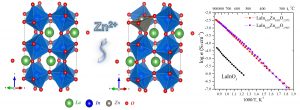
- 01/04/2023: The journal of Sustainable Energy Technologies and Assessments (IF = 7.632) has published a short review “Chemical design of oxygen electrodes for solid oxide electrochemical cells: A guide”, which describes the latest advances in the chemical design of oxygen electrodes for solid oxide electrochemical devices. This paper was prepared toghether with colleagues: S. Ricote (Colorado School of Mines/USA) and Z. Shao (Nanjing Tech University/China and Curtin University/Australia).
► DOI: https://doi.org/10.1016/j.seta.2023.103185
► ResearchGate: https://www.researchgate.net/publication/369644089.

- 08/03/2023: In the International Journal of Hydrogen Energy (IF = 7.139), the laboratory staff together with colleagues from the Ural Federal University published the second part of “Ba-doped Pr2NiO4+δ electrodes for proton-conducting electrochemical cells”. In this work, the authors presented the results of transport properties of Pr2–xBaxNiO4+δ with the aim of their further application in electrochemical cells with proton-conducting electrolytes. Based on the results obtained, it was shown that the Pr1.8Ba0.2NiO4+δ composition could be recommended as the most optimal electrode.
► DOI: https://doi.org/10.1016/j.ijhydene.2023.02.075
► ResearchGate: https://www.researchgate.net/publication/368987875
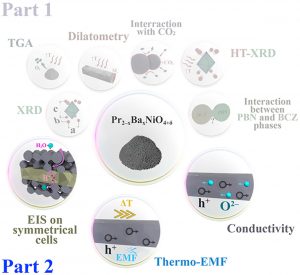
- 08/03/2023: The journal Applied Sciences (IF=2.838) has been published the article ‘Novel Proton-Conducting Layered Perovskites Based on BaLa2In2O7 Produced by Cationic Co-Doping’. In this work, the bilayered perovskites BaLa1.9−xSrxGd0.1In2O7−0.5x have been prepared and studied for the first time. The possibility of oxygen-ionic and proton transport was demonstrated. Cationic co-doping was shown to increase the proton conductivity values by up to 1.5 orders of magnitude.
► DOI: https://doi.org/10.3390/app13063449
► ResearchGate: https://www.researchgate.net/publication/369128082
► https://www.mdpi.com/2076-3417/13/6/3449
- 08/03/2023: The article ‘Spectroscopic Study of Five-Coordinated Thermal Treated Alumina Formation: FTIR and NMR Applying’ has been accepted and published in the International Journal of Molecular Sciences (IF=6.208). This work represents research into materials designed to improve the environment. The study was carried out on aluminum hydroxide xerogels and alumina catalysts obtained by the Controlled Double Jet Precipitation (CDJP) process at different pH values. It has been shown that the pH of the CDJP process determines the content of aluminum-bound nitrate ions in the aluminum hydroxide. These ions are removed at a higher temperature than the decomposition of ammonium nitrate. The high content of aluminum-bound nitrate ions determines the structural disorder of the alumina and the high content of the penta-coordinated alumina catalyst.
► DOI: https://doi.org/10.3390/ijms24065151
► ResearchGate: https://www.researchgate.net/publication/369105901
► https://www.mdpi.com/1422-0067/24/6/5151
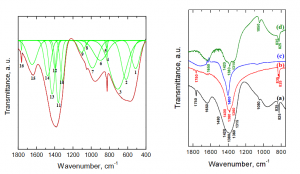
- 03/03/2023: The Journal of Power Sources (IF = 9.794) has published a paper on the transport properties of proton-conducting materials based on barium stannate, doi: https://doi.org/10.1016/j.jpowsour.2023.232883. In this work, the laboratory staff analyzed in detail the features of ionic and electron transfer of ceramics depending on its composition (BaSn1–xYxO3–δ [BSYx, 0 ≤ x ≤ 0.4]).This is important for understanding how BSYx should be used in high temperature applications, either as an electrolyte for solid oxide fuel cells/electrolysers or as a mixed ion-electron membrane. It turned out that both are fundamentally feasible, since the nature of the transfer in BSYx depends on the depth of doping with yttrium. Thus, slightly doped stannates have a pronounced electronic conductivity of both n- and p-type, while heavily doped stannates acquire the behavior of classical protonic electrolytes (BaCeO3, BaZrO3, SrZrO3), which are characterized by the presence of a wide electrolytic region.
► ResearchGate: https://www.researchgate.net/publication/368877003.
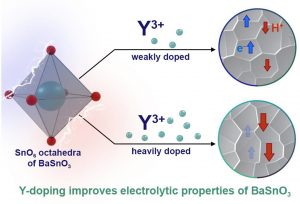
- 19/01/2023: Th The Journal Applied Sciences (Switzerland), (IF=2.736) published an article titled ‘Novel Pr-Doped BaLaInO4 Ceramic Material with Layered Structure for Proton-Conducting Electrochemical Devices’. In this work, the layered perovskite BaLa0.9Pr0.1InO4 was obtained and investigated as a protonic conductor for the first time. The possibility for water intercalation and proton transport is proved. It was shown that isovalent doping Pr3+ → La3+ leads to an increase in the crystal lattice size, proton concentration and proton mobility. The proton conductivity value for doped BaLa0.9Pr0.1InO4 composition is 18 times greater than for pure BaLaInO4 composition.
► DOI: https://doi.org/10.3390/app13031328
► https://www.mdpi.com/2076-3417/13/3/1328
► ResearchGate: https://www.researchgate.net/publication/367270082
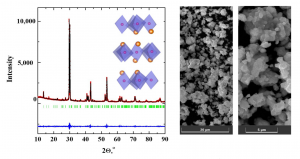
- 12/01/2023: A team of Russian researchers from of IHTE, Ural Branch of the Russian Academy of Sciences and Ural Federal University, as well as scientific research centers from Samara and Syktyvkar presented a new research work in Journal of Physical Chemistry C (IF=4.126). It is entitled ‘Magnocolumbites Mg1−xMxNb2O6−δ (x = 0, 0.1, and 0.2; M = Li and Cu)’. Mg1−xMxNb2O6−δ magnocolumbites has been theoretically studied by GT, BVSE, and DFT methods for the presence of ionic conductivity. The modeling showed predominant 3D oxygen ionic diffusion. The modeling and experimentally measured isotherms of conductivity proved the pure oxygen ionic conductivity for MgNb2O6 and Li-doped ceramics with Ea=0.86 eV, which can therefore be considered as solid electrolytes for SOFCs. Cu-doped samples possess n-type electronic conductivity and possible oxygen transport at T >400 °C.
► DOI: https://doi.org/10.1021/acs.jpcc.2c06631
► ResearchGate: https://www.researchgate.net/publication/366651856
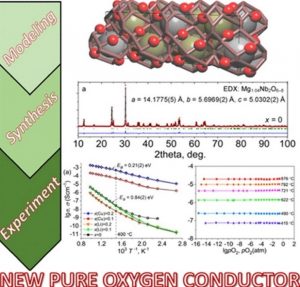
- 28/12/2022: An employee of the laboratory, N.A. Tarasova, was prepared a review paper ‘Layered Perovskites BaLnnInnO3n+1 (n = 1, 2) for Electrochemical Applications: A Mini Review’ published in an open access journal of Membranes (IF = 4.562). This review highlights the achievements in the field of proton-conducting electrolytes based on lanthanum-barium indate with a layered structure.
► DOI: https://doi.org/10.3390/membranes13010034
- 28/12/2022: Employees of the IHTE and UrFU laboratories along with colleguaes from University of South China (China), Nanjing Tech University (China), and Curtin University (Australia) have published a review paper entitled ‘Electrolyte materials for protonic ceramic electrochemical cells: Main limitations and potential solutions’ in the journal of Materials Reports: Energy. This review highlights modern advances in the development of proton-conducting electrolytes for their application in solid oxide electrochemical devices. The main focus is devoted to the existing problems that hinder the commercialization of such devices.
► DOI: https://doi.org/10.1016/j.matre.2022.100158
► ResearchGate: https://www.researchgate.net/publication/363739979
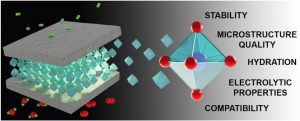
- 12/12/2022: Layered perovskite SrLa2Sc2O7 was investigated as a protonic conductor for the first time. The results of the study are published in the work ‘Novel Protonic Conductor SrLa2Sc2O7 with Layered Structure for Electrochemical Devices’ (the Journal Materials (IF = 3.748)). The possibility for water uptake and protonic transport was revealed. It was shown that the SrLa2Sc2O7 composition can be considered a prospective ionic conductor.
Check out the following link:
► DOI: https://doi.org/10.3390/ma15248867
► ResearchGate: https://www.researchgate.net/publication/366267189
► https://www.mdpi.com/1996-1944/15/24/8867
- 12/12/2022: The effect of oxyanion-doping on hydration processes and electrical characteristics in CaZrO3 perovskite was published in the International Journal of Hydrogen Energy (IF=7.139). The article is entitled ‘Nonmetal doping strategy to enhance the protonic conductivity in CaZrO3’. There is structure, water uptake and conductivity for the phosphorous-doped perovskite CaZr0.95P0.05O3.025 were investigated.
Check out the following link:
► DOI: https://doi.org/10.1016/j.ijhydene.2022.11.264
► ResearchGate: https://www.researchgate.net/publication/366209278
- 07/12/2022: Employees of the Laboratory of Electrochemical Devices Based on Solid Oxide Proton Electrolytes (IHTE) and the Hydrogen Energy Laboratory (UrFU) have published a new paper in International Journal of Hydrogen Energy: ‘Ba-doped Pr2NiO4+δ electrodes for proton-conducting electrochemical cells. Part 1: Structure, mechanical, and chemical properties’, being a first part of the research:
► DOI: https://doi.org/10.1016/j.ijhydene.2022.11.175
A free access link available until 26 Jan 2023:
► https://authors.elsevier.com/a/1gD3i1HxM4zQOe
In this work, the authors investigated the physicochemical properties of materials based on layered nickelites from the viewpoint of their application as electrodes for solid oxide fuel cells and electrolyzers. It was shown that the chemical modification of the base nickelite, Pr2NiO4+δ, by a partial substitution of barium for praseodymium enhances the stability of the phase, preventing its decomposition at high temperatures and also improves its chemical compatibility with widely used proton-conducting electrolytes of a barium cerate-zirconate family. The revealed effects contribute to the improvement of quality of the electrode/electrolyte interface, which should lead to better electrode characteristics. Electrochemical verification of these assumptions is presented in the second part of the work, which will soon be sent to the same journal.
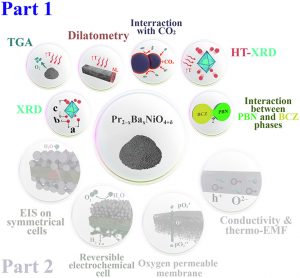
- 06/12/2022: The International Journal of Hydrogen Energy (IF=7.139) has accepteda new paper entitled paper ‘Cation and oxyanion doping of layered perovskite BaNd2In2O7: Oxygen-ion and proton transport’. In this paper, the possibility of cation and oxyanion (P5+ → In-sublattice) doping of layered perovskite BaNd2In2O7 was carried out for the first time.
► DOI: https://doi.org/10.1016/j.ijhydene.2022.11.172
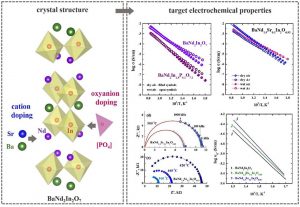
- 29/11/2022: The journal of Processes (IF= 3.352) has been published an article ‘Synthesis, Hydration Processes and Ionic Conductivity of Novel Gadolinium-Doped Ceramic Materials Based on Layered Perovskite BaLa2In2O7 for Electrochemical Purposes’. Gadolinium-doped ceramic materials based on layered perovskite BaLa2In2O7 were obtained and investigated for the first time in this study. The effect of the dopant concentrations on the hydration processes and on ionic conductivity was revealed.
► DOI: https://doi.org/10.3390/pr10122536
► ResearchGate: https://www.researchgate.net/publication/365870906
- 12/11/2022: A new paper entitled ‘Electrochemical Activity of Original and Infiltrated Fe-Doped Ba(Ce,Zr,Y)O3-Based Electrodes to Be Used for Protonic Ceramic Fuel Cells’ is published in the Catalysts journal (IF = 4.501). In this work, the polarization characteristics of promising electrodes based on BaFexCe0.7–xZr0.2Y0.1O3–δ (BCZYFx) for their application in protonic ceramic fuel cells have been comprehensively studied. Along with obtaining information about the properties of individual BCZYFx electrodes, a method of increaing their electrochemical activity by introducing PrOx electrocatalyst nanoparticles into the porous structure was used and analysed.
► DOI: https://doi.org/10.3390/catal12111421
► ResearchGate: https://www.researchgate.net/publication/365322652
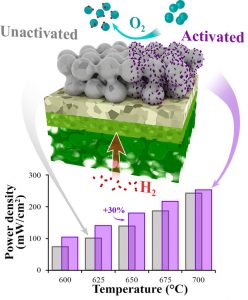
- 24/10/2022: A new work ‘Novel High Conductive Ceramic Materials Based on Two-Layer Perovskite BaLa2In2O7‘ published in the International Journal of Molecular Sciences (IF=6.208) focuses on the oxygen ion and proton transport (ionic conductivity and mobility) in alkali-earth (Sr2+, Ba2+)-doped layered perovskites based on BaLa2In2O7.
► DOI: https://doi.org/10.3390/ijms232112813
► ResearchGate: https://www.researchgate.net/publication/364681300
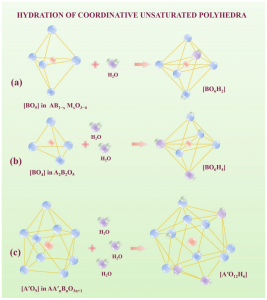
- 20/10/2022: A paper ‘Proton Transport in the Gadolinium-Doped Layered Perovskite BaLaInO4’ has been published in the Materials journal (IF= 3.748). Gadolinium-doped layered perovskite BaLaInO4 was obtained and investigated for the first time. The composition BaLa0.9Gd0.1InO4 demonstrates predominantly protonic transport under wet air and low temperatures (<400 °С).
► DOI: https://doi.org/10.3390/ma15207351
► ResearchGate: https://www.researchgate.net/publication/364595601
- 10/10/2022: A focus review entitled ‘Layered and hexagonal perovskites as novel classes of proton-conducting solid electrolytes. A focus review’ has been recently published in the first issue of the Electrochemical Materials and Technologies journal. This article discusses new classes of proton-conducting solid electrolytes as well as their physicochemical and transport properties.► DOI: https://doi.org/10.15726/elmattech.2022.1.004
► ResearchGate: https://www.researchgate.net/publication/364307135
- 29/09/2022: A new paper on oxygen-ion and proton transport (ionic conductivity and mobility) in layered perovskites based on BaLa2In2O7 doped with alkaline-earth metals (Sr2+, Ba2+) is published in the Inorganics journal (IF=3.149). In the article entitled ‘Oxygen Ion and Proton Transport in Alkali-Earth Doped Layered Perovskites Based on BaLa2In2O7’, the electrical characteristics of the materials of the claimed composition were studied in detail.
Check out the following links:
► DOI: https://doi.org/10.3390/inorganics10100161.
► ResearchGate: https://www.researchgate.net/publication/364226246.
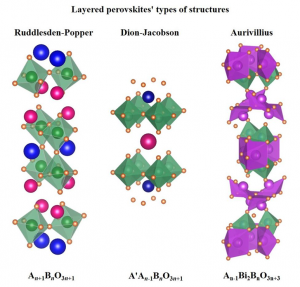
- 27/09/2022: In the Materials journal (IF= 3.748) is published article entitled ‘Advanced Proton-Conducting Ceramics Based on Layered Perovskite BaLaInO4 for Energy Conversion Technologies and Devices’.
Check out the following link:
► DOI: https://doi.org/10.3390/ma15196841.

- 13/09/2022: in the Journal of Alloys and Compounds (IF = 6.371) is published a new article aiming at layered phases based on Ba2SnO4.
Check out the following links:
► DOI: https://doi.org/10.1016/j.jallcom.2022.167170.
► ResearchGate: https://www.researchgate.net/publication/363503496.

- 05/09/2022: In the OA Materials journal (IF = 3.748) is published an article entitled ‘Modernized Synthesis Technique of Pr2NiO4+δ-Based Complex Oxides Using Low-Temperature Salt Melts’.
Check out the following links:
► DOI: https://doi.org/10.3390/ma15176148 (https://www.mdpi.com/1996-1944/15/17/6148).
► ResearchGate: https://www.researchgate.net/publication/363271390.
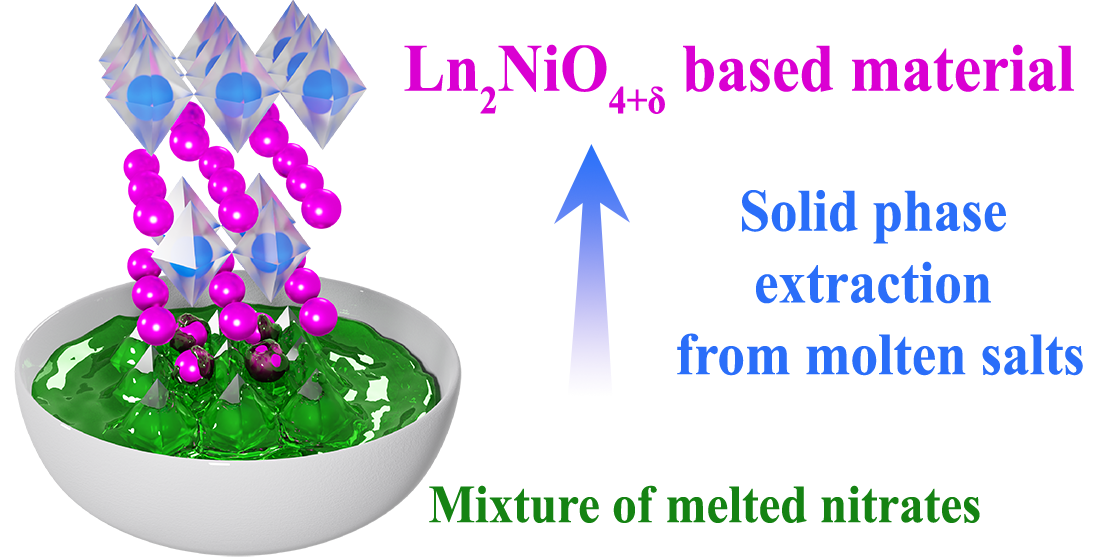
- 29/08/2022: A new article “Comparing the luminescence properties of ZnAl2O4 synthesized by citrate-nitrate auto-combustion and solid-state synthesis routes” has been just accepted for publication in the Ceramics International journal (IF=5.532).
Check out the following links:
► DOI: https://doi.org/10.1016/j.ceramint.2022.08.277.
► ResearchGate: https://www.researchgate.net/publication/363077500.
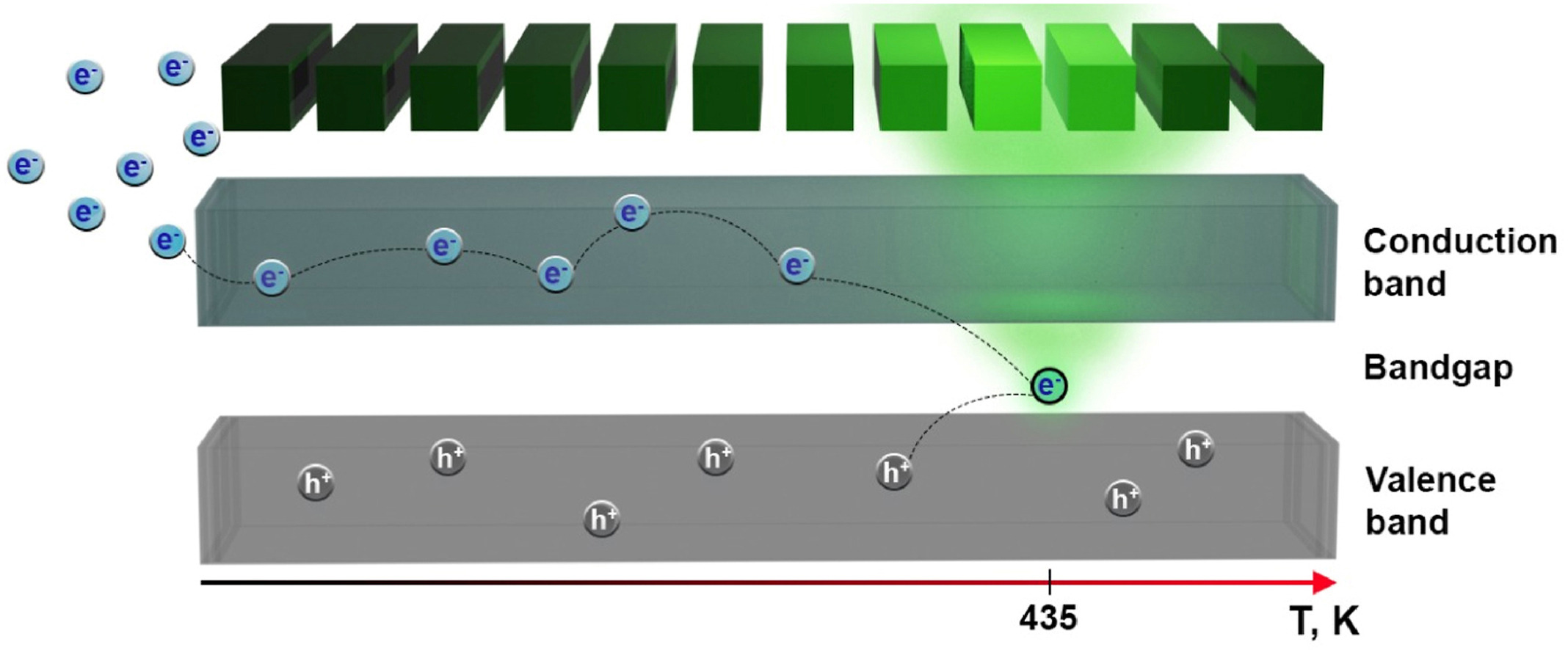
- 22/08/2022: A new article “Novel mixed oxygen-electronic conductors based on BaLa2In2O7 with two-layer Ruddlesden-Popper structure” is accepted in the Ceramics International journal (IF=5.532).
Check out the following links:
► DOI: https://doi.org/10.1016/j.ceramint.2022.08.139.
► ResearchGate: https://www.researchgate.net/publication/362866919.
- 12/07/2022: In the Chimica Techno Acta journal is published an article entitled ‘Phosphorus-doped protonic conductors based on BaLanInnO3n+1 (n = 1, 2): applying oxyanion doping strategy to the layered perovskite structure’.
Check out the following links:
► DOI: https://doi.org/10.15826/chimtech.2022.9.4.05.
► ResearchGate: https://www.researchgate.net/publication/362289341.
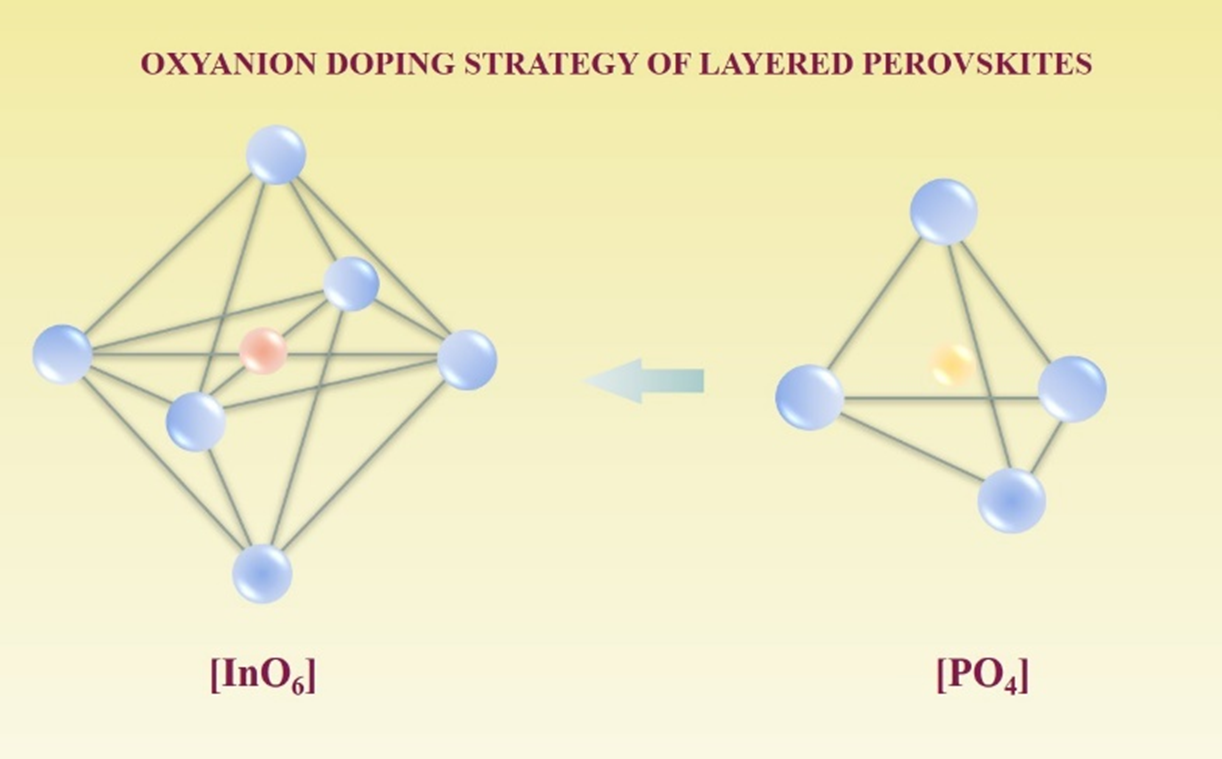
- 02/07/2022: The Journal of Advanced Ceramics (IF = 11.534) has accepted an article “High-temperature transport properties of BaSn1−xScxO3−δ ceramic materials as promising electrolytes for protonic ceramic fuel cells”.
Check out the following links:
► DOI: https://doi.org/10.1007/s40145-022-0599-x (https://rdcu.be/cQR48).
► ResearchGate: https://www.researchgate.net/publication/361306563.
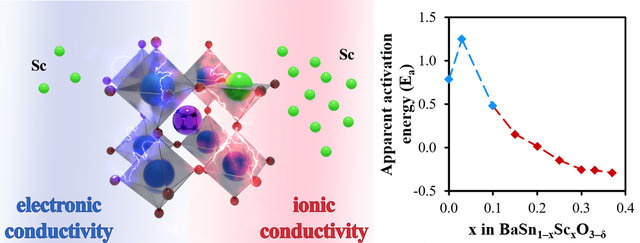
- 09/06/2022: A new review article ‘Recent progress in the design, characterisation and application of LaAlO3– and LaGaO3-based solid oxide fuel cell electrolytes’ is published in the Nanomaterials journal (IF = 5.719). DOI: https://doi.org/10.3390/nano12121991.
► ResearchGate: https://www.researchgate.net/publication/361190253.
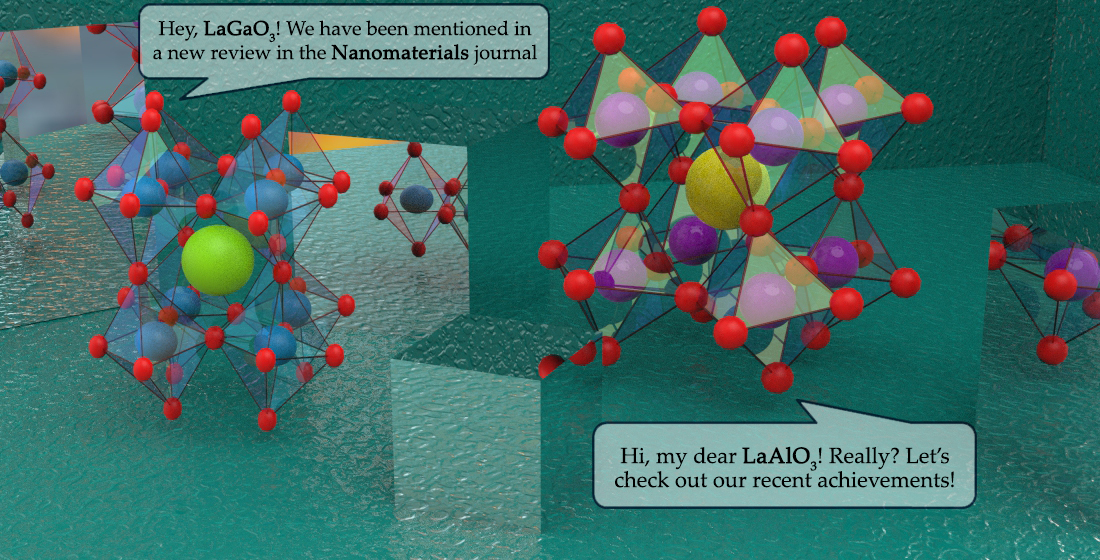
- 31/05/2022: In the Journal of The Electrochemical Society (IF = 4.386) is published an article devoted to new solid-state sensors: https://doi.org/10.1149/1945-7111/ac725d.
ResearchGate: https://www.researchgate.net/publication/360798908.
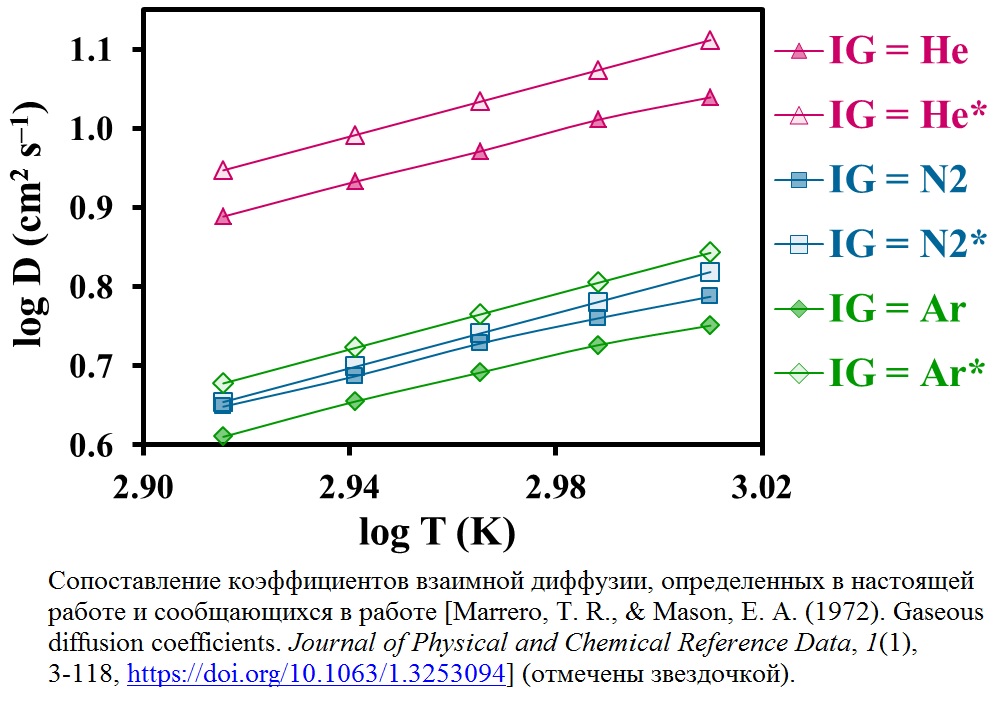
- 30/05/2022: The article ‘Ceramic materials based on lanthanum zirconate for the bone augmentation purposes: materials science approach’ has been published in the Chimica Techno Acta journal, DOI: https://doi.org/10.15826/chimtech.2022.9.2.09.
- 12/05/2022: The Materials journal has accepted an article entitled «Layered Perovskites BaM2In2O7 (M = La, Nd): From the Structure to the Ionic (O2−, H+) Conductivity».
Check out the following links:
► Doi: https://doi.org/10.3390/ma15103488
► ResearchGate: https://www.researchgate.net/publication/360548595

- 07/05/2022: In the International Journal of Hydrogen Energy (IF = 7.139), a new article «Novel proton-conducting layered perovskite based on BaLaInO4 with two different cations in B-sublattice: Synthesis, hydration, ionic (O2−, H+) conductivity», has been published.
Check out the following links:
► Doi: https://doi.org/10.1016/j.ijhydene.2022.04.112
► ResearchGate: https://www.researchgate.net/publication/360451384
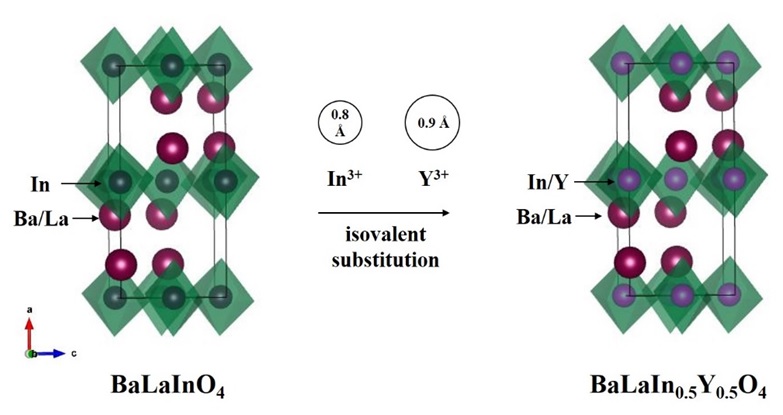
- 14/04/2022: The article entitled «Protonic Transport in Layered Perovskites BaLanInnO3n+1 (n = 1, 2) with Ruddlesden-Popper Structure» is published in the Applied Sciences journal (IF=2.838).
Check out the following links:
► Doi: https://doi.org/10.3390/app12084082
► ResearchGate: https://www.researchgate.net/publication/360044186
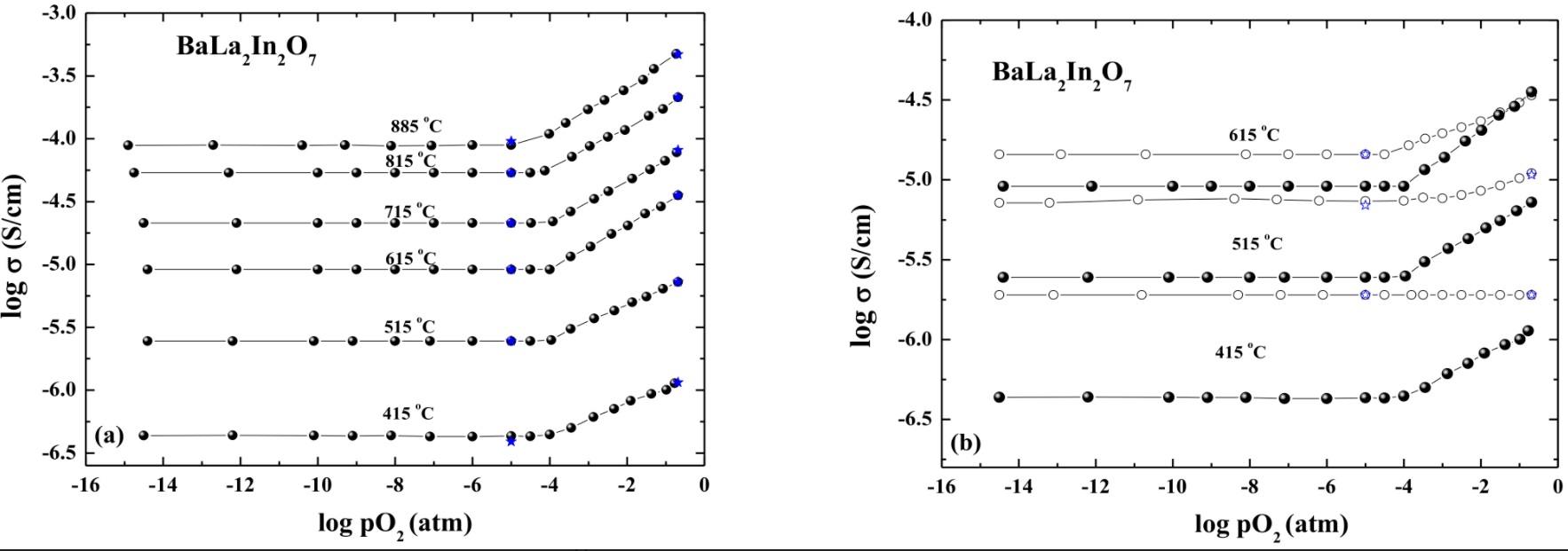
- 27/03/2022: The Russian Journal of Physical Chemistry A (IF=0.791) has published an article ’Effect of Simultaneous Iso- and Heterovalent Doping on the Hydration and State of Oxygen–Hydrogen Groups in Block-Layer Complex Oxides Ba1+xLa1−xIn0.5Y0.5O4−0.5x’:
► Doi: https://doi.org/10.1134/S0036024422030232
► ResearchGate: https://www.researchgate.net/publication/359538250
- 10/03/2022: The Applied Sciencies journal (IF = 2.838) has published a work ‘Proton conductivity of La2(Hf2–xLax)O7–x/2 “stuffed” pyrochlores’ (https://doi.org/10.3390/app12094342). ResearchGate: https://www.researchgate.net/publication/360192085.
- 19/02/2022: In the Ceramics International journal (IF=5.532) a new work is published ’Novel mid-temperature Y3+ → In3+ doped proton conductors based on the layered perovskite BaLaInO4’.
Check out the following links:: https://doi.org/10.1016/j.ceramint.2022.02.102 (doi),
https://www.researchgate.net/publication/358725073 (ResearchGate).

- 17/02/2022: A review work ‘Electrochemistry and energy conversion features of protonic ceramic cells with mixed ionic-electronic electrolytes’ is published in the Energy & Environmental Science journal (IF = 39.714).
Check out the following links:
► Статья: https://doi.org/10.1039/D1EE03109K
► Researchgate page: https://www.researchgate.net/publication/356085592
► Ural Federal University: https://urfu.ru/en
► Shenzhen University: https://en.szu.edu.cn
► Nanjing Tech University: http://en.njtech.edu.cn
► Curtin University: https://www.curtin.edu.au
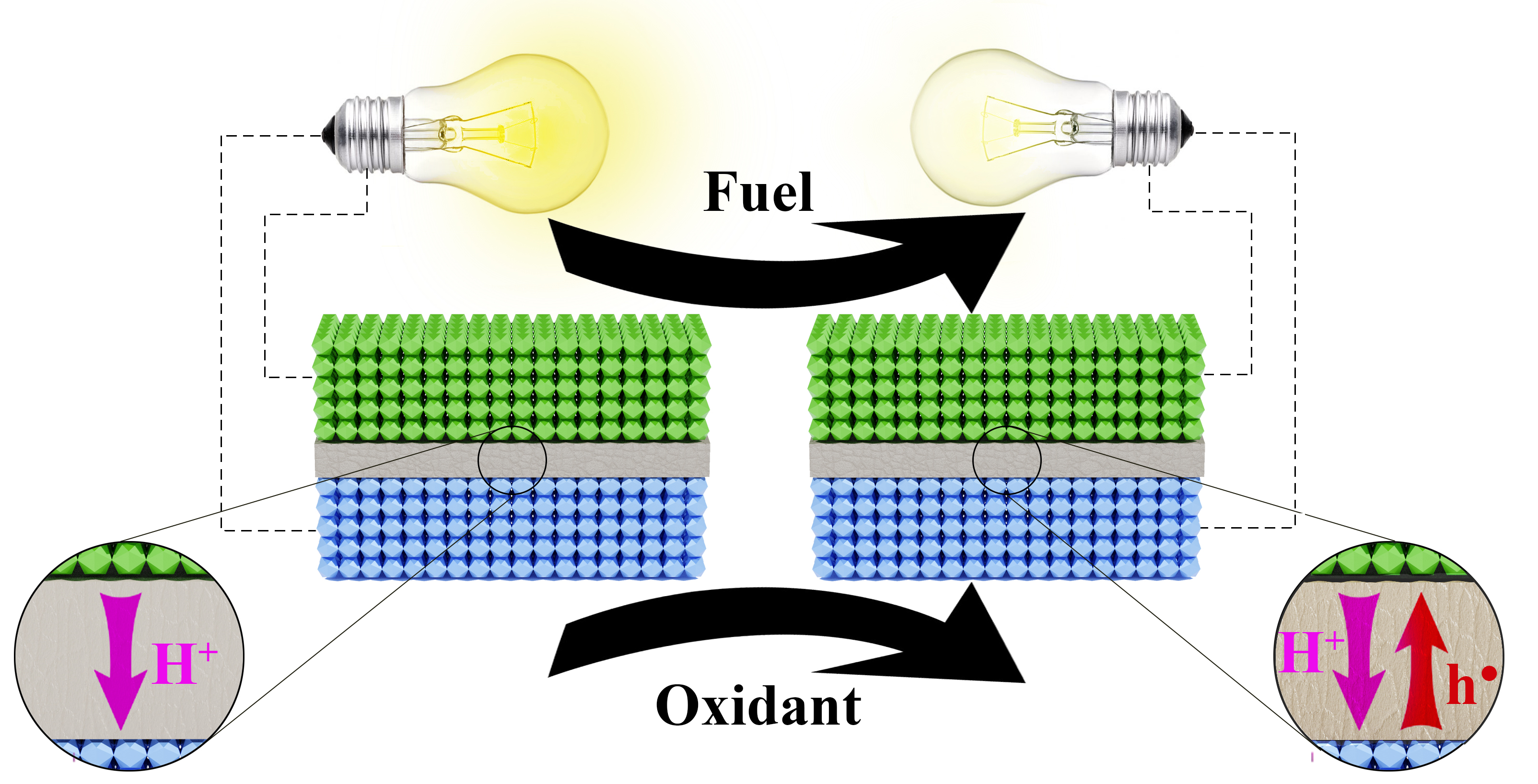
- 24/01/2022: Applied Sciences (IF = 2.838) is published a new article entitled «Crystal Structure, Electrical Conductivity and Hydration of the Novel Oxygen-Deficient Perovskite La2ScZnO5.5, Doped with MgO and CaO».
Check out the following links: https://doi.org/10.3390/app12031181. ResearchGate: https://www.researchgate.net/publication/358121697.
- 11/01/2022: The Journal of the American Ceramic Society (IF = 3.784) accepted for publication another article entitled “Barium-doped Sr2Fe1.5Mo0.5O6–δ perovskite anode materials for protonic ceramic fuel cells for ethane conversion”, which aims at searching for new redox-resistant electrode materials with excellent operability both in air atmospheres and hydrogen or carbon-containing fuels. From this viewpoint, one of the most studied ferrite-molybdates (with a double perovskite structure) was taken as a basis and then its composition was tailored by partial substitution of barium with strontium, Sr2–xBaxFe1.5Mo0.5O6–δ.
Have a look at the following links allowing the additional details to be found on this work:
:arrow: https://doi.org/10.1111/jace.18329 (paper)
:arrow: https://twitter.com/DmitryMedv/status/1479698322440998915 (Twitter)
:arrow: https://www.researchgate.net/publication/357667570 (ResearchGate)
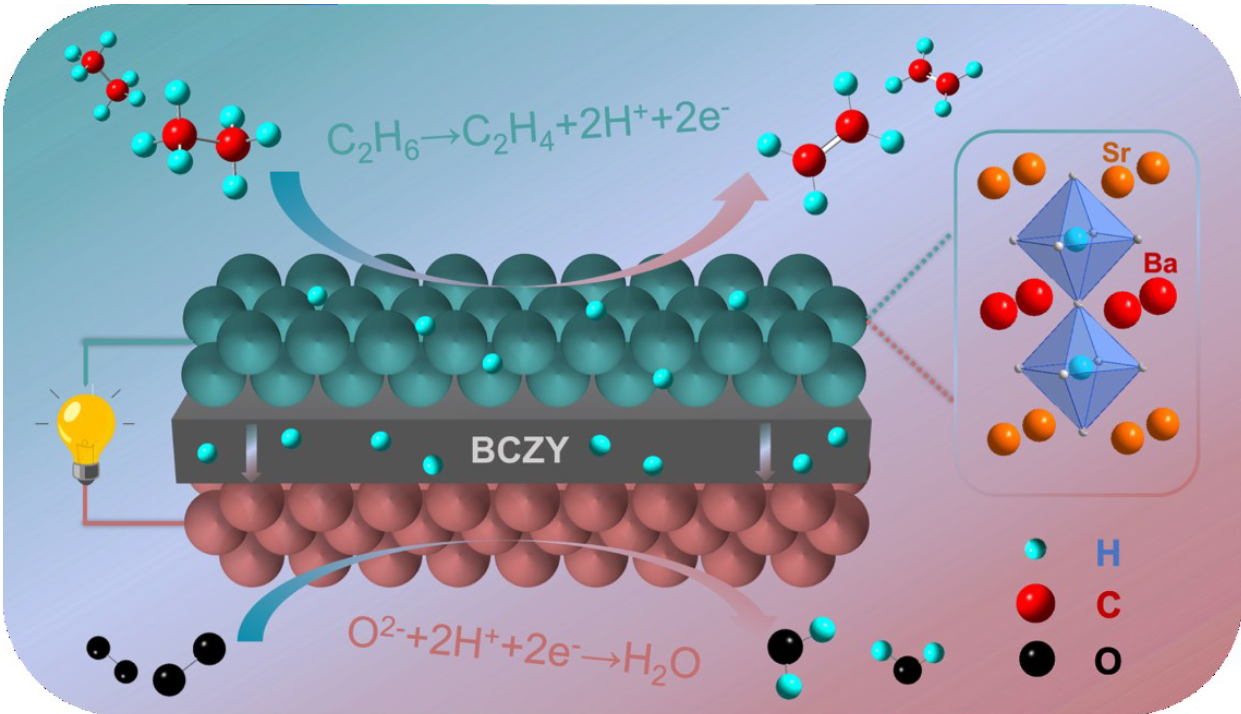
- 11/01/2022: In the Journal of the American Ceramic Society (IF = 3.784), our article “Enhanced transport properties of Sn‐substituted proton‐conducting BaZr0.8Sc0.2O3–δ ceramic materials” has been published in final form: https://doi.org/10.1111/jace.18224.

- 10/01/2022: In the end of the last year, a new review article has been accepted and published in the Materials journal (IF = 3.623). The work entitled “Layered Oxygen-Deficient Double Perovskites as Promising Cathode Materials for Solid Oxide Fuel Cells” was prepared by the head lab with scientists from Belarus and Poland. It overviews the last trends in chemical design of oxygen-deficient phases with double perovskite structures and possibilities of their application in solid oxide fuel cells.
Check out the following link:
:arrow: https://doi.org/10.3390/ma15010141 (the review published in the MDPI, jpen access)
:arrow: https://twitter.com/DmitryMedv/status/1475682690116554758 (Twitter)
:arrow: https://www.researchgate.net/publication/357323824 (ResearchGate)
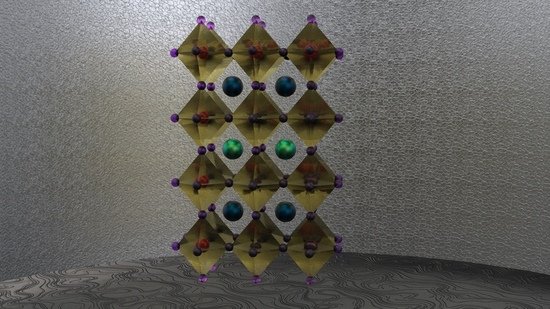
- 08/06/2021: Ceramics International Journal accepted new work. The article “Heavily Sn-doped barium cerates BaCe0.8–xSnxYb0.2O3–δ: correlations between composition and ionic transport” is devoted to the preparation and study of new complex oxides, which are solid solutions between barium cerate (BaCeO3) and stannate (BaSnO3). This work shows the achievement of high chemical stability of the proposed phases. A comprehensive study of the transport properties of ceramic materials shows that ionic conductivity decreases with increasing tin concentration due to crystal and microstructural factors. Nevertheless, Sn-doped cerates as proton conductors can compete with the currently most studied cerate-zirconates.
Publication information: https://doi.org/10.1016/j.ceramint.2021.06.050.
Link for free and free download of the work, active until August 2, 2021: https://authors.elsevier.com/a/1dENw%7E2-F3lwm
https://twitter.com/DmitryMedv/status/1403775529552076803 (Twitter)
https://www.researchgate.net/publication/352214034 (Researchgate)
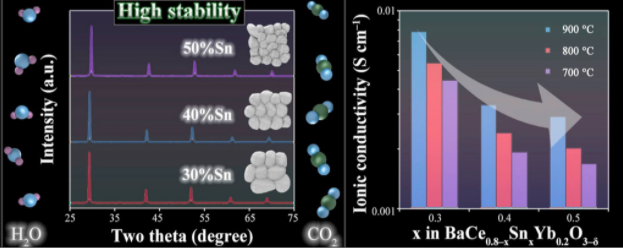
- 02/06/2021: In the Journal of Materials Chemistry A, our latest work was published, devoted to the study of the transport properties of new proton-conducting materials based on barium stannate, which are obtained with the use of sintering additives. In contrast to the data available in the literature, we have shown that the introduction of a small amount of CuO (necessary for the compaction of ceramics at 1500 °C) does not reduce the hydration of materials. This is explained by the fact that the copper phase, localized at the grain boundaries, covers them partially (not completely), which makes it possible to implement proton transfer from one grain to another.
More information is available at the following links: https://doi.org/10.1039/D1TA03399A
https://twitter.com/DmitryMedv/status/1399923834908811264
https://www.researchgate.net/publication/352052778.
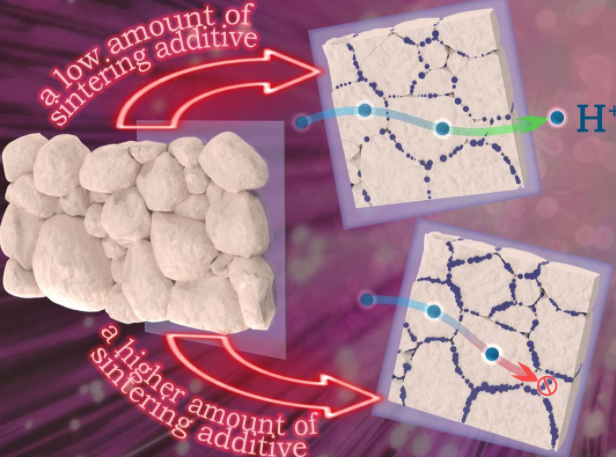
- 05/13/2021: Another work has been published on the use of electrodes of the family of layered nickelites based on Pr2(Ni, Cu)O4+δ in electrochemical devices based on proton-conducting electrolytes. Research by graduate student A.P. Tarutin, which forms the basis of the dissertation, is aimed at optimizing the functional properties of the basic nickelite praseodymium. The doping of the latter with copper contributed, on the one hand, to a decrease in the electrode sintering temperatures and the formation of high-quality adhesion, and, on the other hand, to the preservation of good electrochemical characteristics. Using the example of a medium-temperature reversible solid oxide cell capable of operating both in the mode of a fuel cell for generating electricity and in the mode of an electrolytic cell for producing hydrogen, the prospects of the developed electrodes are shown in conditions of high humidity. The work can be found at the following link: https://doi.org/10.1016/j.jmst.2021.03.056.

- 04/05/2021: The laboratory staff has prepared a new work devoted to the preparation and study of the properties of new phases based on YFeO3. These compounds may be of interest from the point of view of their application as electrode materials with high thermal compatibility with traditional oxygen and proton-conducting electrolytes. The work was published in the journal Ceramics International: https://doi.org/10.1016/j.ceramint.2021.04.300.
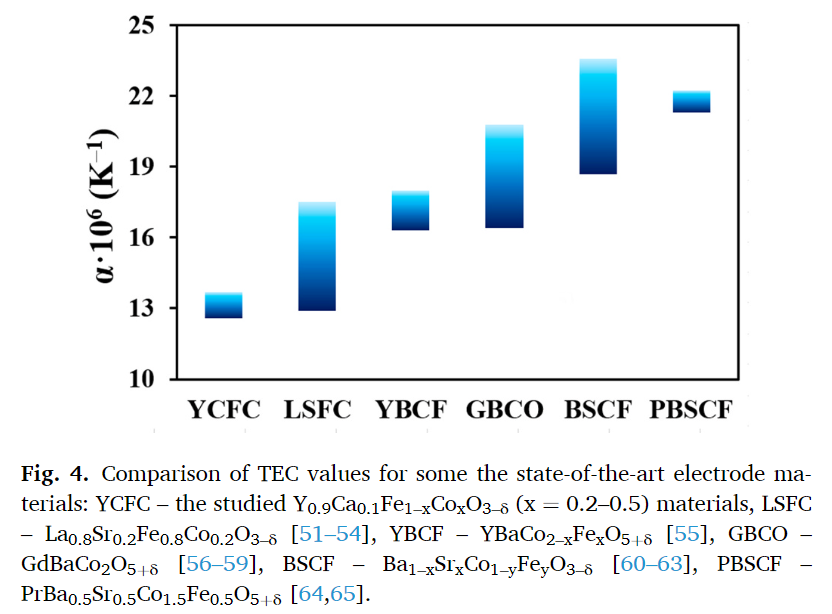
- 01/05/2021: Happy May Day, dear colleagues! We wish you every year to be more productive than the previous one, so that all your work is not in vain and pleases with the results! Happy holidays and weekends and great mood!
- 23/04/2021: An article “Lanthanum-Containing Proton-Conducting Electrolytes with Perovskite Structures” , published as part of the “Expansion” RFBR appeared on the SpirngerLink website. Free access to the work can be obtained using the following link: https://rdcu.be/cjhtq.
- 20/04/2021: We are pleased to announce that two articles of our colleagues have been accepted for publication, the first “Sr2Ni0.7Mg0.3MoO6-δ: Correlation between synthesis conditions and functional properties as anode material for intermediate-temperature SOFCs” (https://doi.org/10.1016/j.ijhydene.2021.02.008) in collaboration with Alexey Vylkov and Lyubov Skutina, is devoted to the study of the synthesis of double perovskites Sr2Ni0.7Mg0.3MoO6-δ, which was carried out by pyrolysis of organic nitrate compositions with different ratios of glycerol or glycine content and ammonium nitrate content. The second article “Catalytic properties of Sr2Ni0.75Mg0.25MoO6–δ based composites for application in hydrocarbon-fuelled solid oxide fuel cells” (https://doi.org/10.1016/j.ijhydene.2021.03.159) in which Alexey Vylkov, Lyubov Skutina and Dmitry Medvedev took part, is devoted to the synthesis and research of composite materials that can be used as new anode materials for solid oxide fuel cells.
- 04/04/2021: Our new review devoted to Mo-containing oxides Sr2MMoO6–δ with a double perovskite structure (where M = Ni, Mg, Fe) has been published in the Journal of Open Access Materials (MDPI). Such compounds are interesting because they can be used as anode materials for fuel cells (high-temperature, SOFC) instead of traditional nickel cermets, having a number of disadvantages, among which we can note low catalytic activity, sulfur poisoning, microstructural changes during long exposures at high temperatures (see https://t.co/k8JlrhDkLE?amp=1). The review is devoted to basic (i.e., undoped) oxides and their physicochemical and functional properties. Full-text article.

- 02/04/2021: A group of scientists have created a material with high proton conductivity. The next stage is the development of model for an efficient proton fuel cell. Chemists from the Ural Federal University and the Institute of High Temperature Electrochemistry of the Ural Branch of the Russian Academy of Sciences (IHTE UB RAS) have created a material with high proton conductivity based on barium-lanthanum indate. The experiments carried out made a significant contribution to the understanding of the mechanisms of proton transport and brought closer the creation of a highly efficient proton solid oxide fuel cell (SOFC). Full version.
- 03/02/2021: The article “Comprehensive analysis of oxygen transport properties of a BaFe0.7Zr0.2Y0.1O3–δ-based mixed ionic-electronic conductor” written by Liana Tarutina, Gennady Vdovin, Julia Lyagaeva and Dmitry Medvedev accepted for publication in the Journal of Membrane Science. This work continues the cycle of studies on the complex oxide system BaCe0.7–xZr0.2Y0.1FexO3–δ. 10.1016/j.memsci.2021.119125.
 22/01/2021: We are glad to congratulate our colleague Yulia Lyagaeva on being awarded the Sverdlovsk Region Governor’s Prize “For the best work in the field of electrophysics and energetics”. Since the establishment of the award in 2004, more than 300 young scientists have received support within the framework of the competition. We wish Yulia patience and strength for the implementation of everything conceived, as well as success and merit in all ambitions! News source.
22/01/2021: We are glad to congratulate our colleague Yulia Lyagaeva on being awarded the Sverdlovsk Region Governor’s Prize “For the best work in the field of electrophysics and energetics”. Since the establishment of the award in 2004, more than 300 young scientists have received support within the framework of the competition. We wish Yulia patience and strength for the implementation of everything conceived, as well as success and merit in all ambitions! News source.
- 04/01/2021: At the beginning of 2021 two reviews will be published in journals Membranes and Membrane Technologies and Journal of Materials Chemistry A. Both works were prepared within the framework of the main direction of laboratory research. The first review “Lanthanum-containing proton-conducting electrolytes with a perovskite structure” is devoted to the description of the structural and transport properties of lanthanum-containing complex oxides with a perovskite structure, which can demonstrate proton transfer. The article will be published in the second issue of 2021.
DOI: https://dx.doi.org/10.1134/S221811722102005X
ResearchGate: https://www.researchgate.net/publication/347992560
Twitter: https://twitter.com/DmitryMedv/status/1344115652613844993
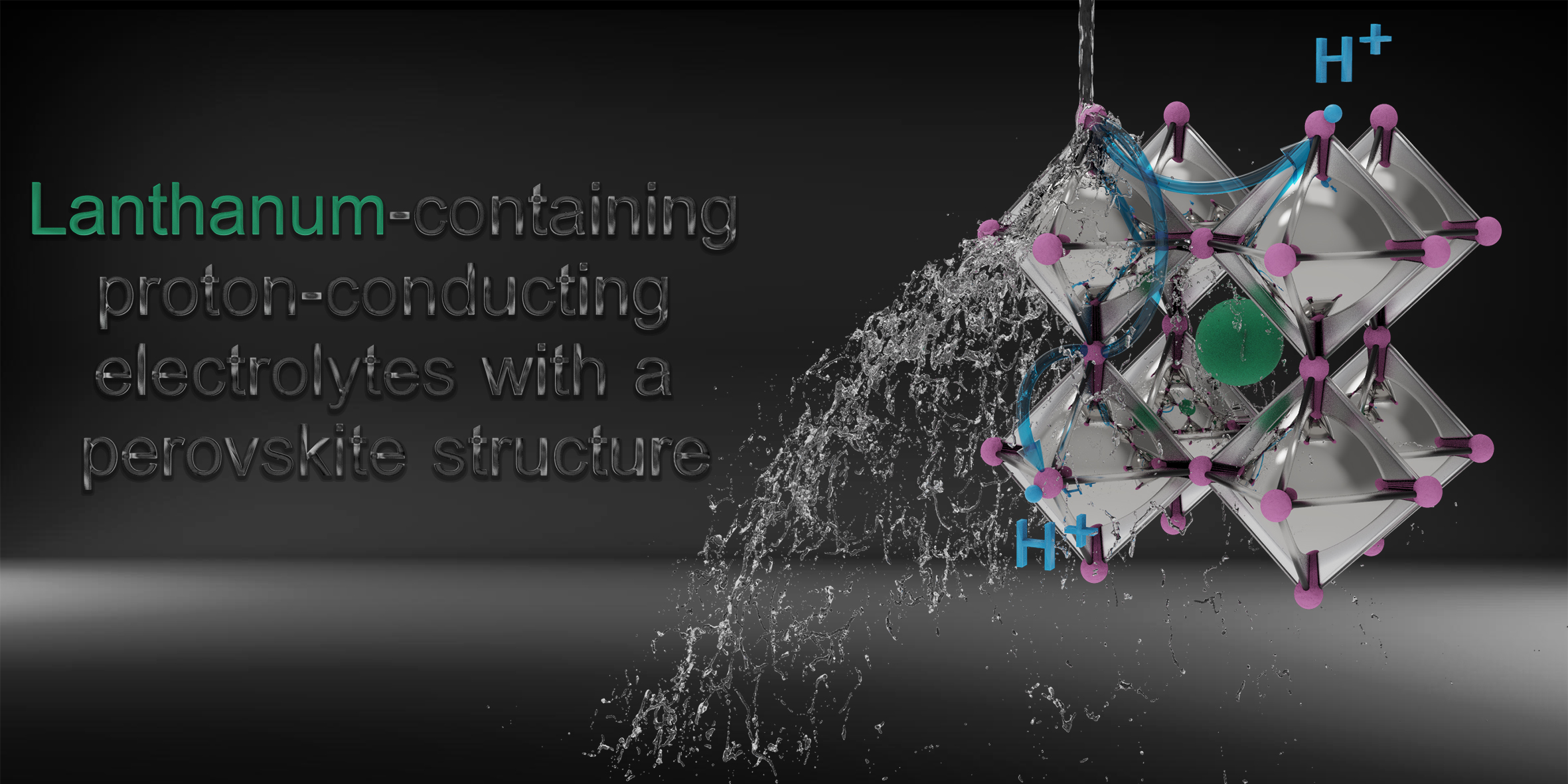
In the second review “Recent advances in layered Ln2NiO4+δ nickelates: Fundamentals and prospects for application in protonic ceramic fuel and electrolysis cells” the most complete information to date has been collected concerning the properties of layered phases based on Ln2NiO4+δ and the features of their electrochemical applications, including in systems with proton-conducting electrolytes. The article was published in the first issue of 2021.
DOI: https://doi.org/10.1039/D0TA08132A
ResearchGate: https://www.researchgate.net/publication/346474887
Twitter: https://twitter.com/DmitryMedv/status/1325665240009338881
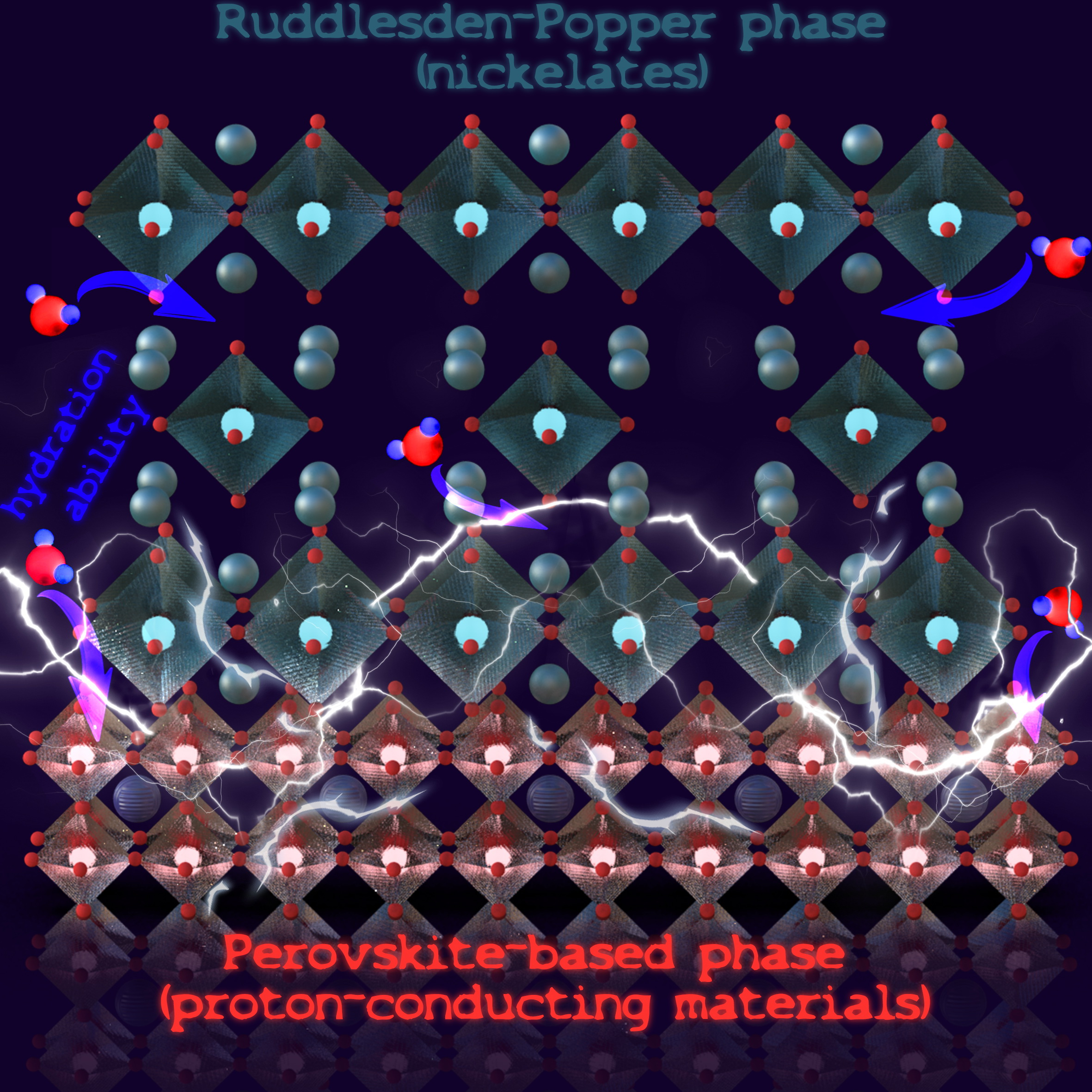
- All of us at the Laboratory of electrochemical devices based on solid oxide proton electrolytes join in sending season’s greetings with all good wishes for the New Year! Sincerest wishes for hope, happiness, and peace during this Holiday Season and throughout the coming year!

- 08/12/2020: Laboratory staff prepared a review within the framework of the “Expansion” project of the Russian Foundation for Basic Research which was accepted for publication in the journal “Membranes and Membrane Technologies” The review “Lanthanum-containing protonic electrolytes with a perovskite structure” is devoted to the description of the structural and transport properties of lanthanum-containing complex oxides with a perovskite structure, which can demonstrate proton transfer and will be published in the second issue of 2021.

- 16/11/2020: Laboratory staff (A.P. Tarutin, Yu.G. Lyagaeva, D.A. Medvedev) with colleagues from Portugal (A.A.Yaremchenko) and China (L. Bi) prepared a joint review. It contains the most complete information to date concerning the properties of layered phases based on Ln2NiO4+δ and the features of their electrochemical applications, including in systems with proton-conducting electrolytes. The review “Recent advances in layered Ln2NiO4+δ nickelates: Fundamentals and prospects for application in protonic ceramic fuel and electrolysis cells” was accepted for publication in the Journal of Materials Chemistry A. It will be available soon at the following link: https://doi.org/10.1039/D0TA08132A.

- 02/11/2020: We are pleased to announce that all abstracts included in the book of abstracts “Physical chemistry and electrochemistry of molten and solid electrolytes” (Conference) have been indexed in Elibrary.
- 31/10/2020: Medvedev D.A. with colleagues in the laboratory, received a grant to write a scientific review for the development of Russian journals in the international arena (“Expansion” competition). This year the competition was serious – only 500 applications out of 6214 submitted were supported. Congratulations!
- 29/10/2020: The past 2019 was declared by the United Nations General Assembly as the International Year of the Periodic Table of Chemical Elements in honor of the 150th anniversary of the discovery of the Periodic Law of Chemical Elements by the great Russian scientist Dmitry Mendeleev. The year passed under the authority of UNESCO in Russia, France, Germany, Spain, USA and Japan. As part of this event, many scientific conferences, thematic exhibitions, young scientist contests were held around the world. More than 500 popular science and educational events were held in Russia alone. At the end of this year, the final report which includes all the most interesting (link) was released, .
- 19/10/2020: Dear colleagues, on the ANRI Academy website, presentations and video recordings of previous events organized by the Association of Scientific Editors and Publishers are freely available for everyone. Session of the Russian members of the European Association of Science Editors (EASE) and the Association of Science Editors and Publishers (ASEP). Webinar “Russian scientific journal and foreign reader – a lot of things that you would like to know, but did not know where to ask“. Webinar “Retraction of an article from scientific journal: recommendations for authors“.
- 01/10/2020: Following the results of the XVIII Russian conference “Physical chemistry and electrochemistry of molten and solid electrolytes”, which was held in absentia, a book of abstracts was published. The decision of the Conference can be found here. In addition, we remind the conference participants about the opportunity to send the full versions of the articles to the special issues of the International Journal of Hydrogen Energy, Chimica Techo Acta, Rasplavy (Russian Metallurgy).
- 08/09/2020: We congratulate our colleague Julia Lyagaeva on receiving the prestigious award “For Women in Science”, which has been implemented in Russia since 2007 with the participation of the Russian Academy of Sciences, the Commission of the Russian Federation for UNESCO in Moscow and is part of the international project L’OREAL-UNESCO For Women in Science.

Under the terms of the competition, applicants for a national scholarship can be women scientists, candidates and doctors of science under the age of 35 (inclusive) who work in Russian scientific institutes and universities in the following disciplines: physics, chemistry, medicine and biology. The selection criteria are the candidate’s scientific success, the significance and practical use of her scientific research, as well as the desire to continue her scientific career in Russia. Over the 13 years of the program’s existence in Russia, 125 young women researchers have been awarded the L’OREAL-UNESCO prize for important scientific achievements. We are sincerely happy for Julia and wish her further scientific and creative successes!
- 17/08/2020: The group of A.N. Volkov prepared a new article “Electrochemical sensors based on proton-conducting electrolytes for determination of concentration and diffusion coefficient of CO2 in inert gases”, which will be published in the journal Chemical Engineering Science. To analyze CO2 in gas mixtures, a sensor based on a proton-conducting electrolyte of the LaYO3 family was used. Such an electrolyte can transport protons from a humidified atmosphere to an atmosphere containing CO2, then reducing carbon dioxide. Under stationary conditions, the limiting current is formed, which forms the basis of temperature or concentration calibration dependences for subsequent analysis. This work expands the area of possible application of electrochemical devices based on proton-conducting electrolytes. The article can be found at the following link: https://doi.org/10.1016/j.ces.2020.116046.
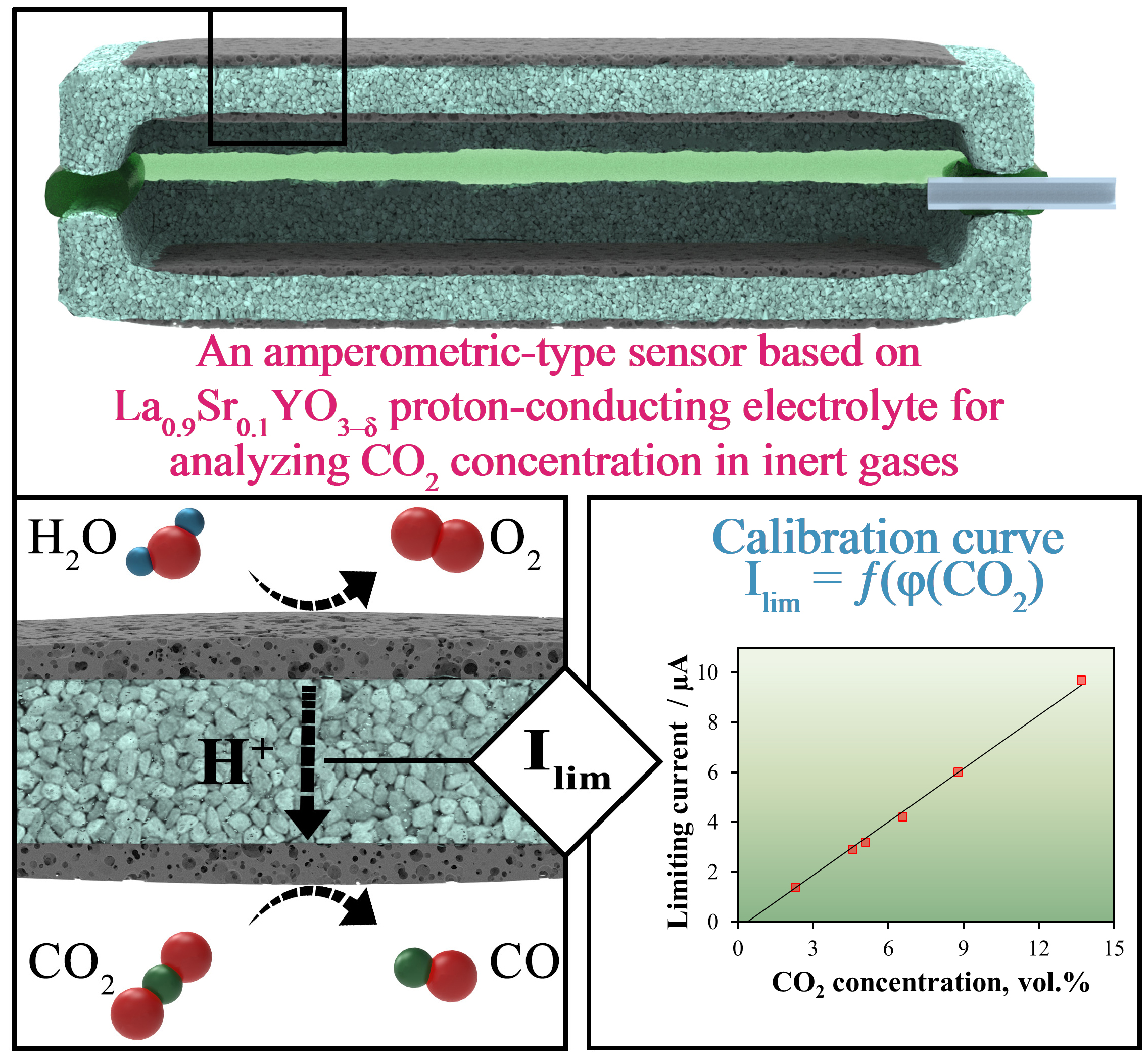
- 28/07/2020: At the state level, a system of financial, social and professional support measures has been established for young scientists carrying out promising research in the areas of scientific and technological development and modernization of the Russian economy. Some of them were discussed at the recent meeting of Minister Valery Falkov with young scientists. Full version of the article.
- 14/07/2020: Scientists from the Ural Federal University and the Institute of High Temperature Electrochemistry of the Ural Branch of the Russian Academy of Sciences have created a combined electrochemical amperometric-potentiometric oxygen sensor, which differs from existing sensors by an unusual design solution and increased reliability. Read more.
- 29/06/2020: Updated impact factors of scientific journals for 2020-2021 have been published.
General list of journals (Q1-Q4);
List of journals Q1, List of journals Q2, List of journals Q3, List of journals Q4;
Journals in the field of chemistry, electrochemistry and material science: Q1, Q2, Q3, Q4.
- 25/06/2020: In the journal Journal of Solid State Electrochemistry special issue was published, prepared with the participation of D. Medvedev and S. Ricote (USA) as guest editors. Information about this special issue and articles can be found here: https://link.springer.com/journal/10008/24/7.
- 23/06/2020: The new article “Revealing the effect of the cell voltage and external conditions on the characteristics of protonic ceramic fuel cells” was published with the participation of the head of our laboratory A.K. Demin in the Journal of Materials Chemistry A, one of top-rated chemical journals. It offers a mathematical description of the processes occurring in SOFC-H +, in order to optimize the operation of such devices. The article can be found at the following link: https://doi.org/10.1039/D0TA03935G.
- 19/06/2020: Laboratory authors team consisting of A.P. Tarutin, M.Yu. Gorshkov, I.N. Bainov, G.K. Vdovin, Yu.G. Lyagaev and D.A. Medvedev prepared the work “Barium-doped nickelates Nd2–xBaxNiO4+δ as promising electrode materials for protonic ceramic electrochemical cells”, accepted for publication in the journal Ceramic International. The article is devoted to the search for optimal electrode materials based on Ba-doped Nd2NiO4+δ, possessing chemical compatibility and high electrochemical activity in systems with barium-containing proton-conducting electrolytes. Additional information on the work can be found at the following link: https://doi.org/10.1016/j.ceramint.2020.06.217, as well as here RG and here Tw.
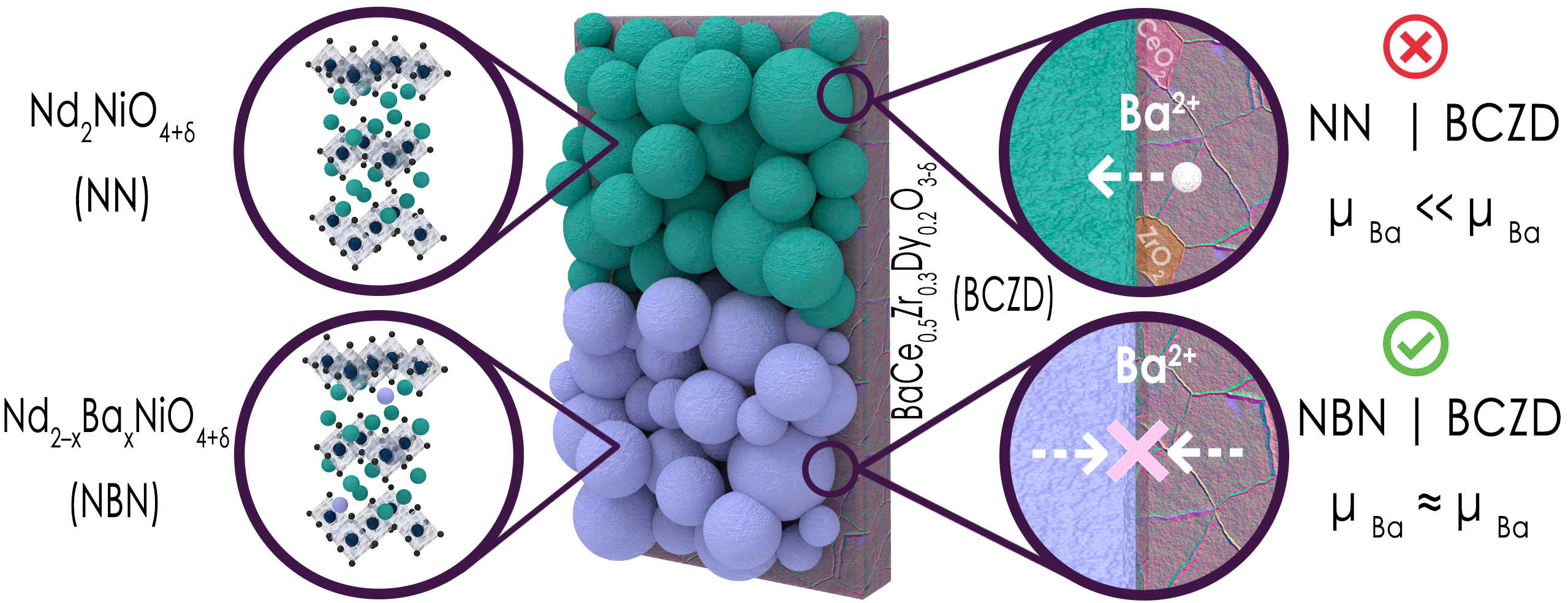
- 28/05/2020: In the journal Russian Chemical Reviews, which is the English version of Uspekhi khimii, a review “Ba(Ce,Zr)O3-based electrodes for protonic ceramic electrochemical cells: towards highly compatible functionality and triple-conducting behavior”, of authors A.V. Kasyanova, L.R. Tarutina, A.O. Rudenko, J.G. Lyagaeva, D.A. Medvedev was published, see at this link. Despite the fact that the official publication of this article took place yesterday, the work gathered a large preview performance (more than 440 times on Researchgate and more than 3000 times in Twitter). A fragment of this work (the first six pages) is also available at this link.
- 22/05/2020: The last stage of the formation of the special issue “Electrochemistry of proton-conducting ceramic materials and cells” of the journal Journal of Solid State Electrochemistry has begun. It is led by a guest editors D.A. Medvedev along with S. Ricote, his American colleague. See here: https://rdcu.be/b4kMf. As part of this special issue, 8 articles will be published on the study of proton-conducting materials, including the following:
- Antonova et al., Electrode performance of La2NiO4+δ cathodes in contact with La0.9Sr0.1ScO3−δ proton-conducting oxide, https://doi.org/10.1007/s10008-020-04535-z.
- Tarutin et al., Doped (Nd,Ba)FeO3 oxides as potential electrodes for symmetrically designed protonic ceramic electrochemical cells, https://doi.org/10.1007/s10008-020-04522-4.
- Satapathy et al., Structural and proton conductivity study of BaZr1−xRExO3−δ (RE = Dy, Sm) ceramics for intermediate temperature solid oxide fuel cell electrolyte, https://doi.org/10.1007/s10008-019-04423-1.
- Shlyakhtina et al., Gas-tight proton-conducting Nd2−xCaxZr2O7−δ (x = 0, 0.05) ceramics, https://doi.org/10.1007/s10008-020-04574-6.
- Zhang et al., Modeling investigation of Sm0.5Sr0.5CoO3−δ–Ce0.8Sm0.2O2−δ cathode for proton-conducting ceramic fuel cell, https://doi.org/10.1007/s10008-020-04591-5.
- Tarasova et al., Electrical properties of new protonic conductors Ba1+хLa1–хInO4–0.5х with Ruddlesden-Popper structure, https://doi.org/10.1007/s10008-020-04630-1.
- Filonova et al., Assessment of prospective cathodes based on (1−x)Ca3Co4O9+δ−xBaCe0.5Zr0.3Y0.1Yb0.1O3−δ composites for protonic ceramic electrochemical cells, https://doi.org/10.1007/s10008-020-04606-1.
- Ueno et al., Reexamination of the phase diagram of the BaO-ZrO2-Y2O3 system: Investigation of the presence of separate region in Y-doped BaZrO3 solid solution and Zr-substituted Ba3Y4O9, https://doi.org/10.1007/s10008-020-04716-w.
Guest editors are grateful to all the authors and reviewers who have made an invaluable contribution to the formation of this special issue!
- 21/05/2020: The team of authors of the laboratory (A.S. Kalyakin, A.N. Volkov, M.Yu. Gorshkov) prepared the work “An electrochemical sensor based on zirconia and calcium zirconate electrolytes for the inert gas humidity analysis”, which was accepted for publication in Journal of the Taiwan Institute of Chemical Engineers. The work is devoted to the certification of a sensor consisting of two zirconium-containing electrolytes (oxygen based on ZrO2 and proton-conducting based on CaZrO3), which makes it possible to analyze the moisture content in various inert atmospheres at elevated temperatures. The work can be found at the following link 1016/j.jtice.2020.02.009.
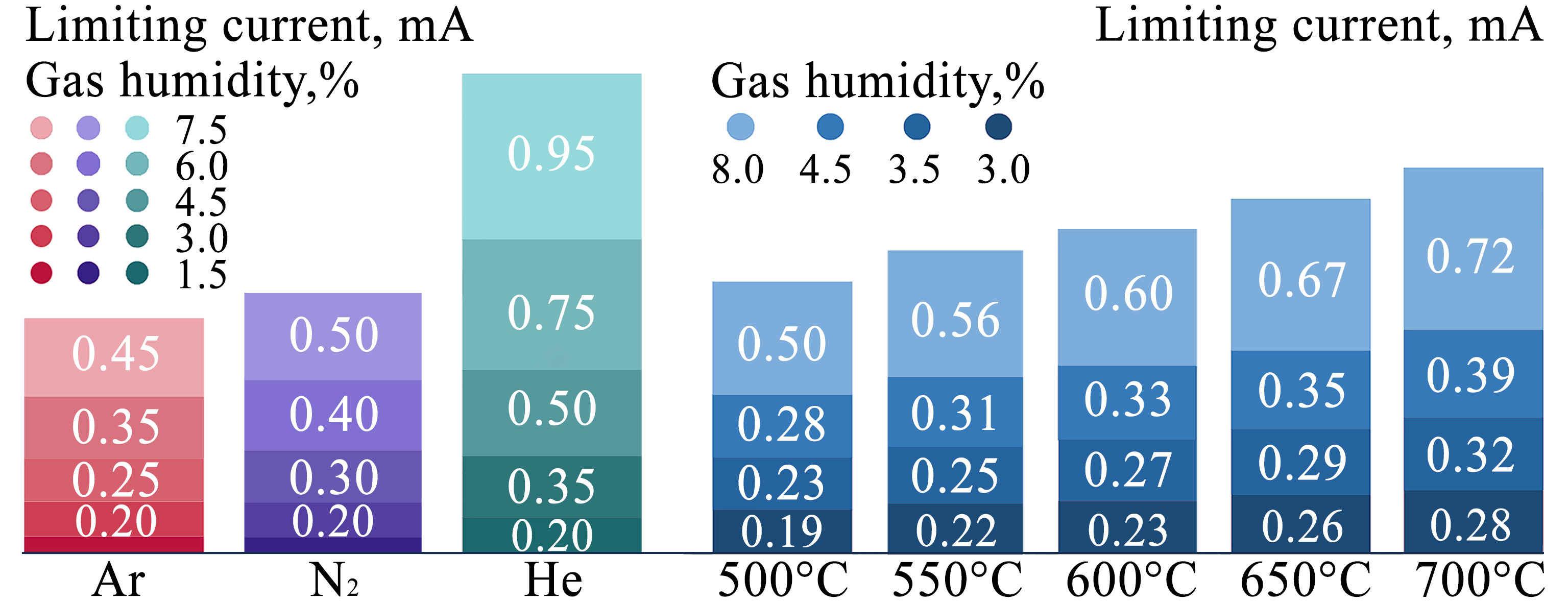
- 13/04/2020: The Enago offers free unlimited access to two modules (out of sixteen) of the Enago Learn educational platform for writing scientific articles in English and the stages of publication in international journals to make the self-isolation period as productive as possible for scientists, teachers, students and graduate students. To access the course modules, follow the instruction: Step 1. Open the link in a browser. Step 2. Click on “Enroll now” and register with your email and password to log in. Step 3. Click on “Have a coupon?” (“There is a coupon”). Step 4. Enter the enagolearn100 coupon and click on “Enroll now”. Step 5. Study the materials at your own pace; the coupon has no expiration date. After passing the modules and passing the tests, you will receive certificates. We wish you success in learning new information, take care of yourself and your loved ones.
- 04/04/2020: A.P. Tarutin, N.A. Danilov, Yu.G. Lyagaeva and D.A. Medvedev have prepared a new article “One-step fabrication of protonic ceramic fuel cells using a convenient tape calendering method”, which was published in the journal Applied Sciences. This work is devoted to studying the possibility of obtaining unit cells of fuel cells using a single temperature stage. The success of this production was achieved due to two factors: the choice of a convenient method of forming cells (joint rolling of films) and the selection of suitable functional materials. You can get acquainted with the work on the following link: https://doi.org/10.3390/app10072481 (RG, Tw).
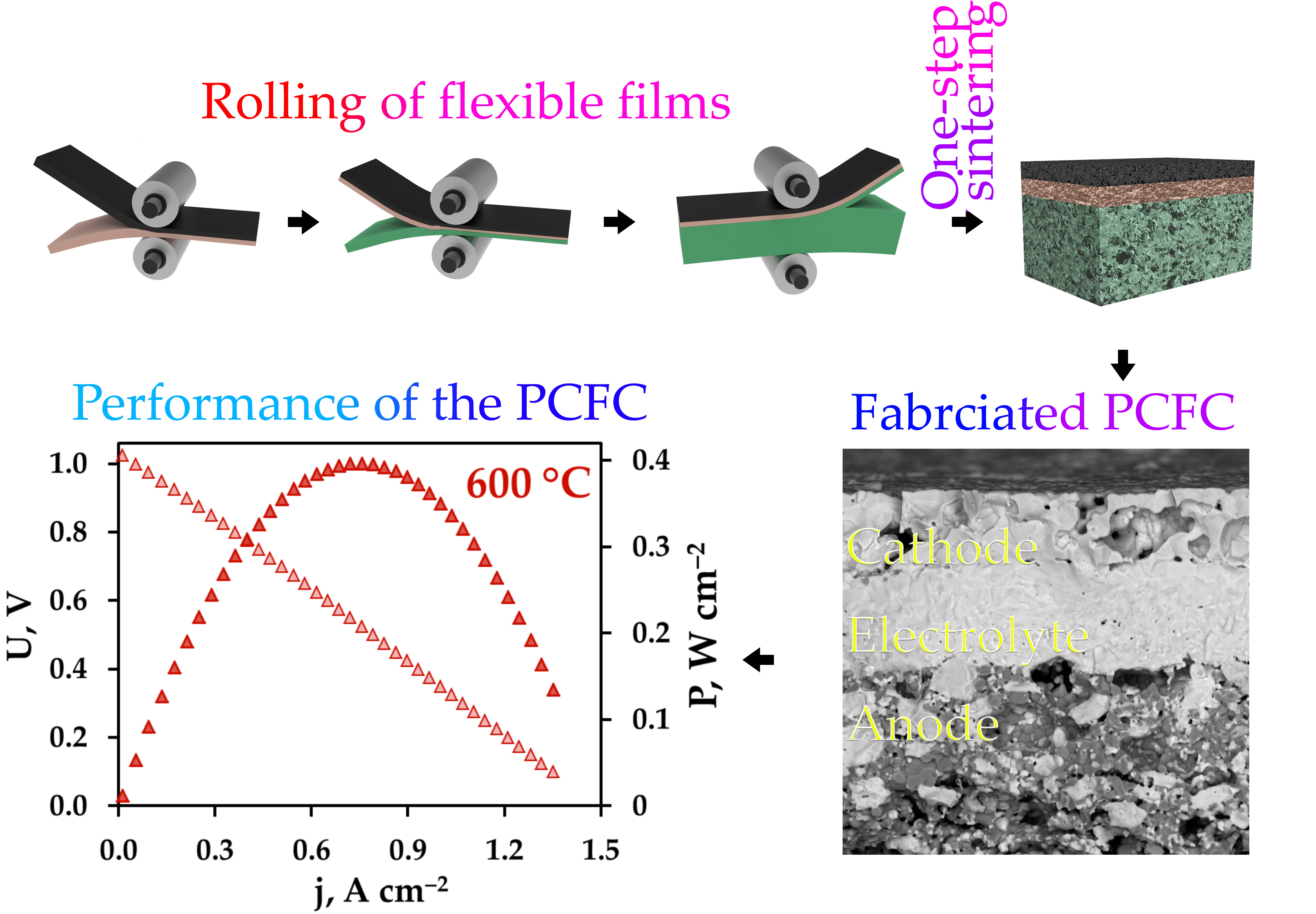
- 02/04/2020: Laboratory staff (E.V. Gorbova, A.N. Volkov and A.K. Demin), in collaboration with Greek colleagues (A. Brozgou and P. Tsiakaras) wrote the chapter “Sensors based on Solid Oxide Electrolytes”, which was included in the monograph “Solid Oxide-Based Electrochemical Devices. Advances, Smart Materials and Future Energy Applications”. More information about this book can be found here and here.
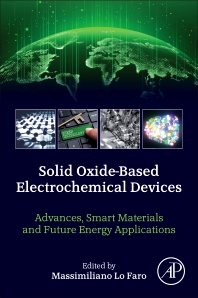
- 24/03/2020: As you know, at the beginning of this year, the RAS institutes received orders on the implementation of budget plans, which is assessed by achieving a total comprehensive score. For IHTE UB RAS it is equal to about 416 points. To date, members of the laboratory have published works with a total “cost” of about 110 points, which is 26% of the overall plan of the institute.
- 23/03/2020: New article “BaCe7–xZr0.2Y0.1FexO3–δ derived from proton-conducting electrolytes: a way of designing chemically compatible cathodes for solid oxide fuel cells”, prepared by L.R. Tarutina, G.K. Vdovin, Yu.G. Lyagaeva and D.A. Medvedev, accepted for publication in Journal of Alloys and Compounds. The work is devoted to the search for new oxides obtained by iron modification of one of the most promising proton electrolytes (BaCe0.7Zr0.2Y0.1O3 – δ), in order to obtain chemically compatible electrodes whose qualitative composition almost completely coincides with the composition of the electrolyte. The work can be found at the following link: https://dx.doi.org/10.1016/j.jallcom.2020.154895 (RG, Tw).
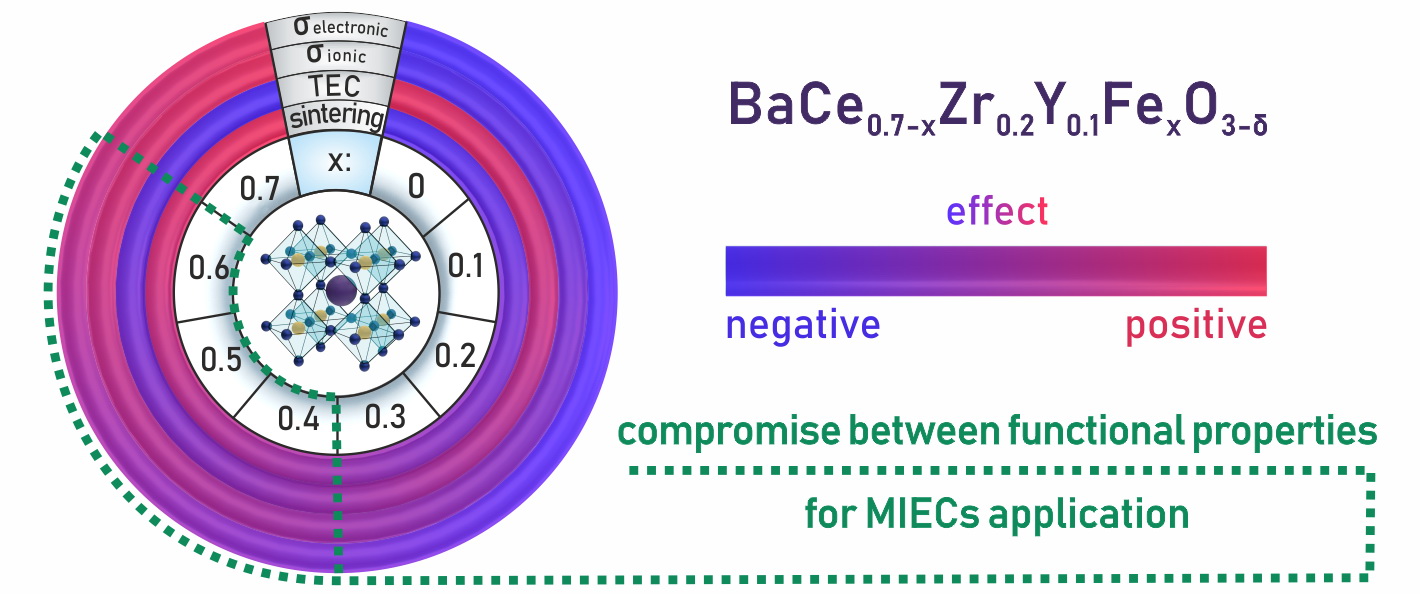
- 19/03/2020: A.S. Kalyakin, E.V. Gorbova, A.N. Volkov and A.K. Demin prepared the article “Combined amperometric-potentiometric oxygen sensor”, which was published in the journal Sensors and Actuators B: Chemical. The work is devoted to the certification of an oxygen sensor, consisting of two functional cells which operates in potentiometric and amperometric modes. Such a sensor allows oxygen to be detected over a wide range of its concentration (0.8–88.0 vol.%). You can read more about this here: https://doi.org/10.1016/j.snb.2020.127999.
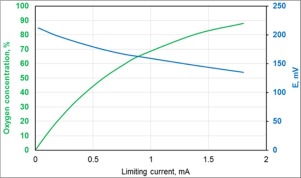
- 11/03/2020: The laboratory staff (A.M. Mineev and D.A. Medvedev), in collaboration with the colleagues of the SOFC laboratory (L.P. Putilov, A.S. Farlenkov and V.I. Tsidilkovsky) prepared an article “Hydration of acceptor-doped BaSnO3: implications of the bound states of ionic defects”, accepted for publication in the journal Acta Materialia. The article presents theoretical and experimental results regarding the hydration feature of relatively new proton electrolytes based on BaSnO3. It has been shown for the first time that these materials are able to hydrate to a theoretical level even at high concentrations of acceptor impurities (3–37 at.%), which allows them to be considered unique representatives of proton conductors. The article can be found at the following link: https://doi.org/10.1016/j.actamat.2020.03.010 (RG, Tw).
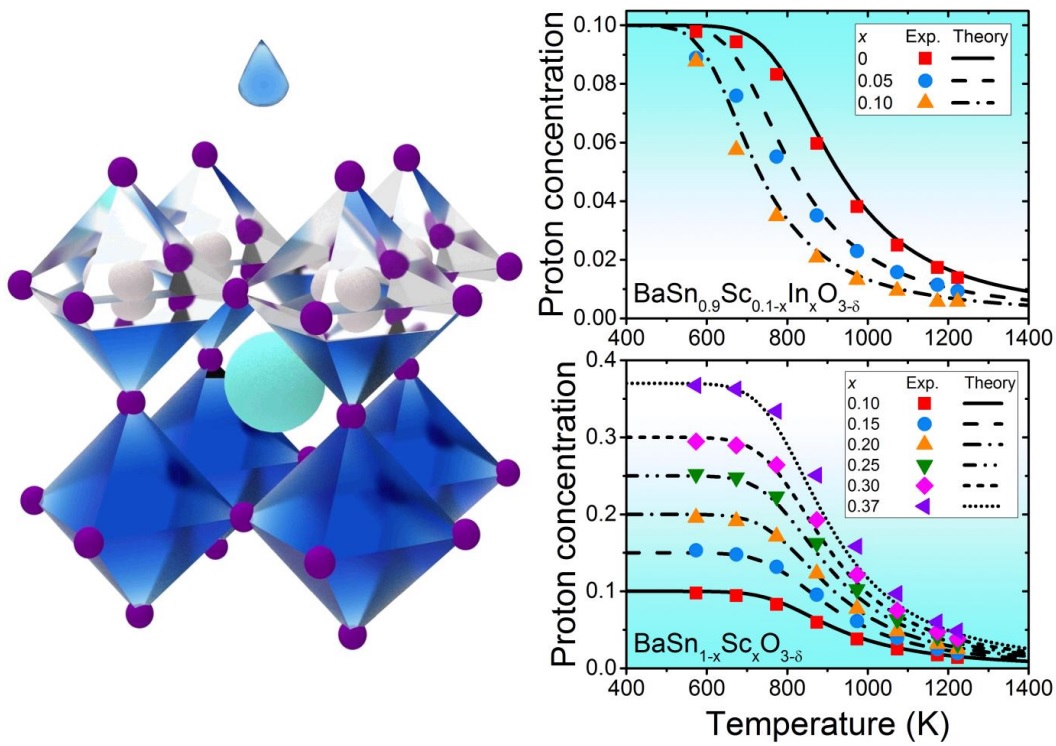
- 04/03/2020: We invite you to take part in the XVIII Russian Conference “Physical Chemistry and Electrochemistry of Molten and Solid Electrolytes” (with international participation), which will be held September 21-25, 2020 in Nalchik, pos. Elbrus, the Republic of Kabardino-Balkaria. Registration and submission of abstracts is until July, 2020.
- 11/02/2020: The laboratory staff (L.R. Tarutina, Yu.G. Lyagaev, A.I. Vylkov, G.K. Vdovin, D.A. Medvedev and A.K. Demin) prepared the work “Doped (Nd,Ba)FeO3 oxides as potential electrodes for symmetrically-designed protonic ceramic electrochemical cells”, which is accepted for publication in Journal of Solid State Electrochemistry. The article is devoted to the creation of electrochemical cells with proton electrolytes having a quasisymmetric configuration. This work corresponds to a relatively new direction in the development of SOFC and SOE, in which it is possible to reduce the number of used (functional) materials and, accordingly, the number of technological modes. The full text of the work is available at the following link: https://rdcu.be/b1IO9 (RG, Tw).
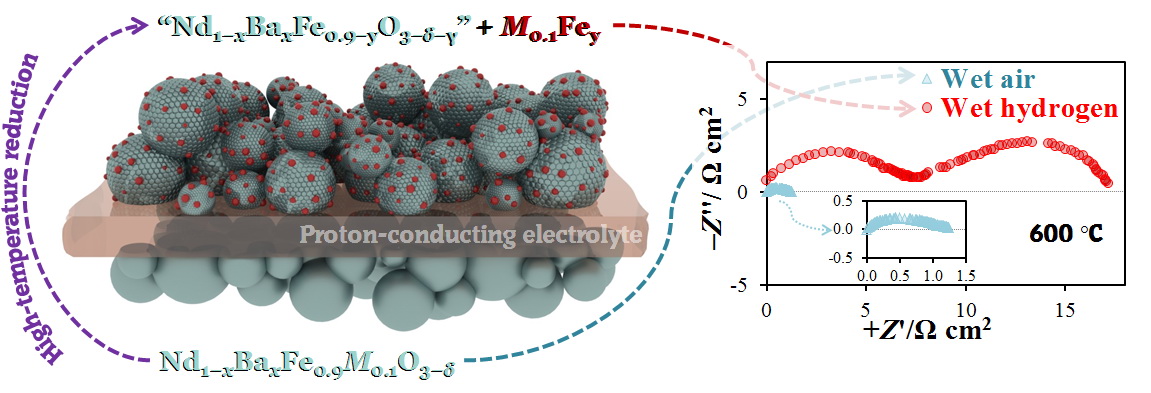
- 07/02/2020: Dear colleagues, the Ministry of Education and Science approved the The method of calculating the impact of publication quality indicator for 2020.
- 28/01/2020: The journal Electrochimica Acta accepted the work of laboratory team (A.P. Tarutin, G.K. Vdovin and D.A. Medvedev) together with a colleague from Portugal А.А. Yaremchenko (CICECO – Aveiro Institute of Materials). The work was prepared as part of a special issue “Distribution of Relaxation Time Analysis for Solid State Electrochemistry” and is devoted to the formation of high-performance nickel electrodes due to the anion doping strategy with the aim of their application in electrochemical cells based on proton-conducting electrolytes. Accepted article is available at the following link: 1016/j.electacta.2020.135808 (RG, Tw).
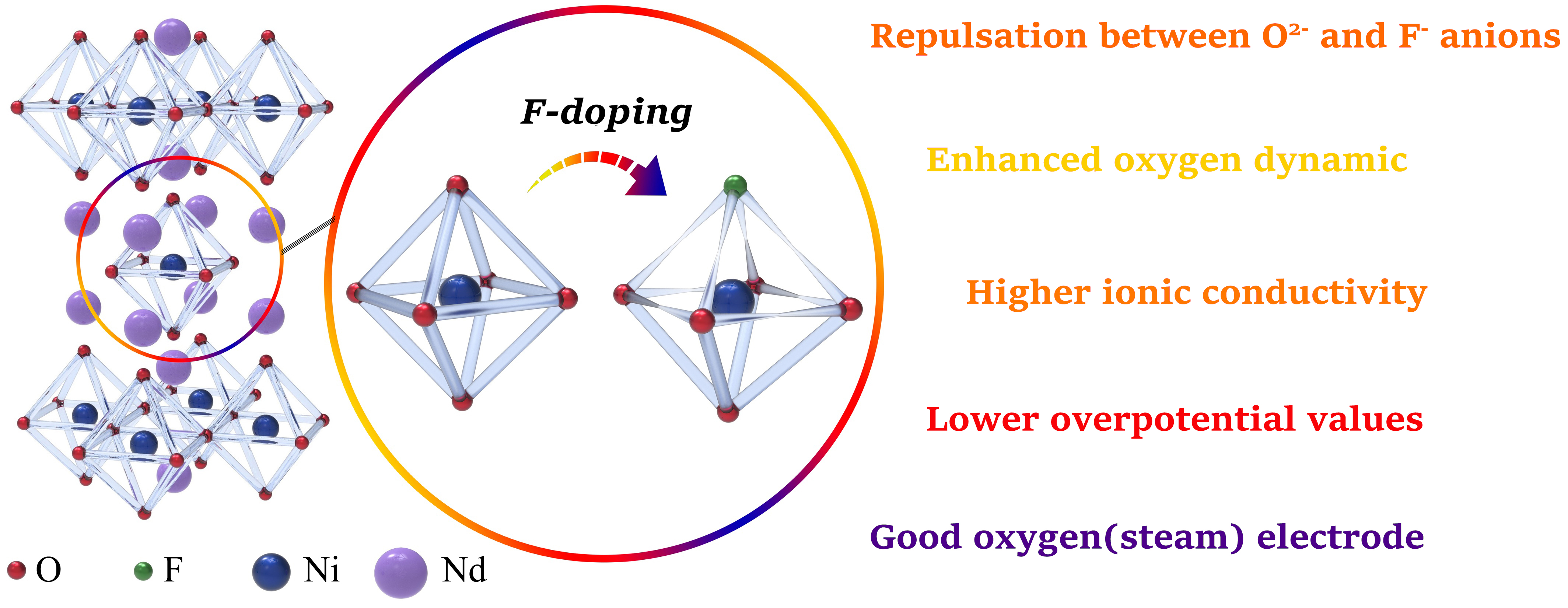
- 10/01/2020: A patent for the invention has been published on the formation of new fluorinated doped oxides with the Rudlsden-Popper structure for their use as electrodes for electrochemical cells based on proton-conducting electrolytes
- 09/01/2020: Laboratory employee D.A. Medvedev, was once again invited as guest editor of Crystals MDPI Journal. Special issue is devoted to the determination of grain boundary resistance for polycrystalline oxide materials. Information can also be found on the social networks: RG, Tw.


